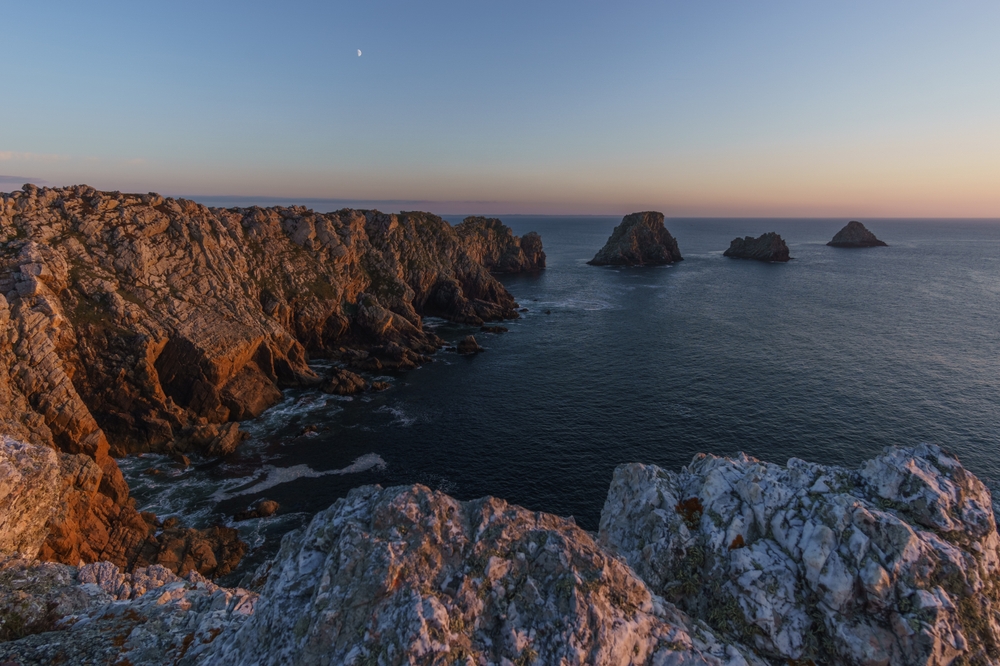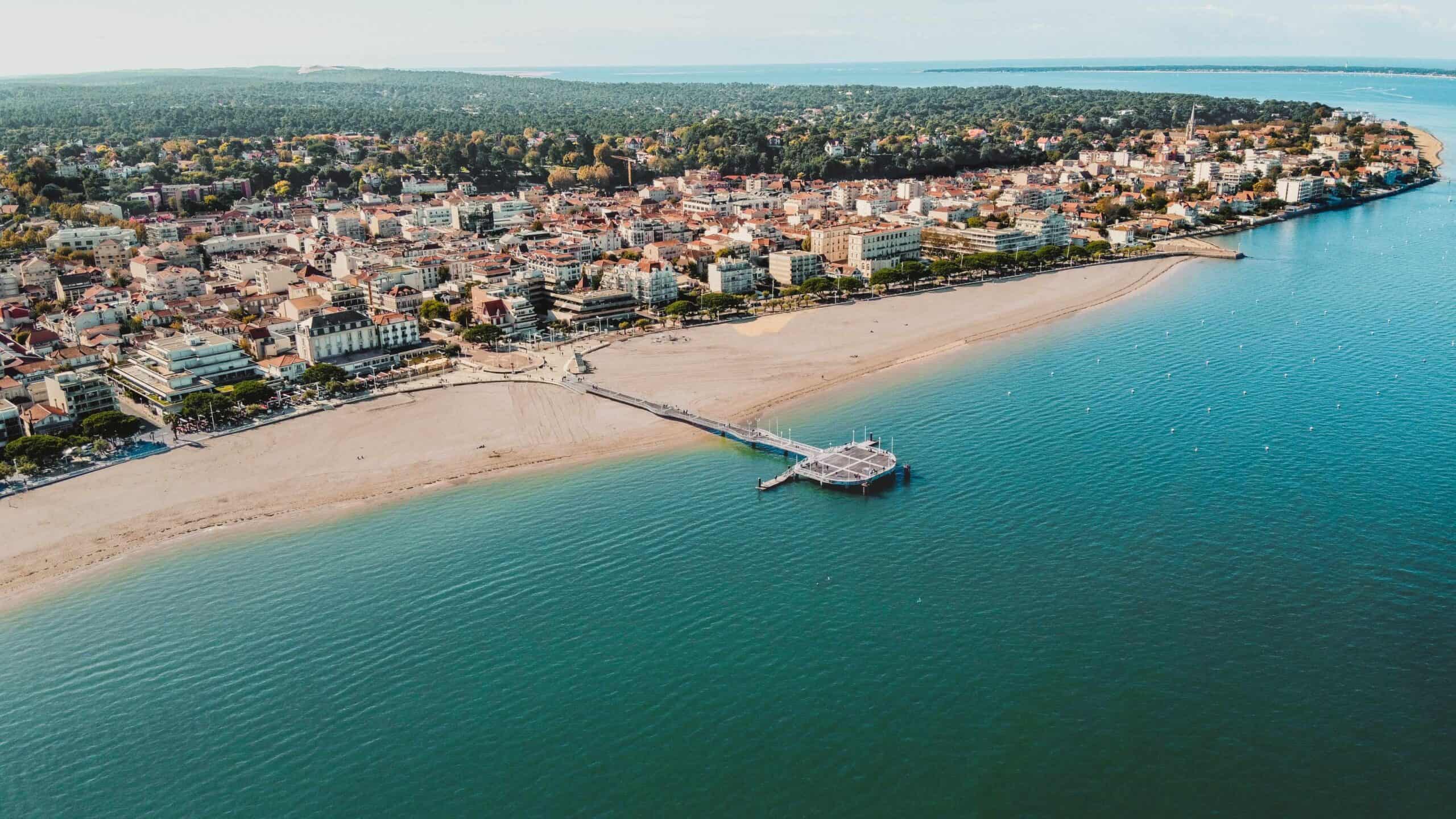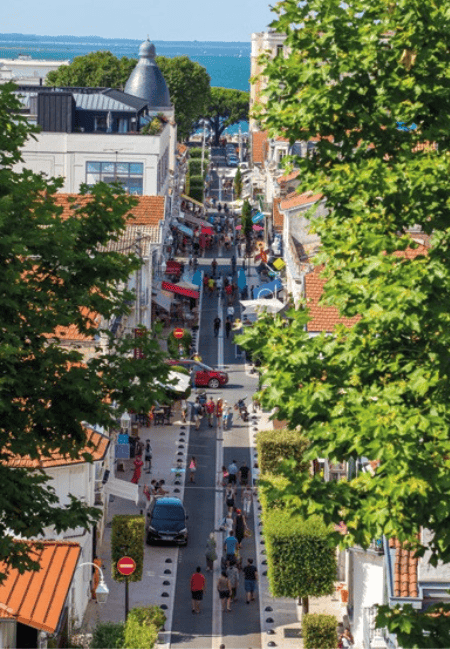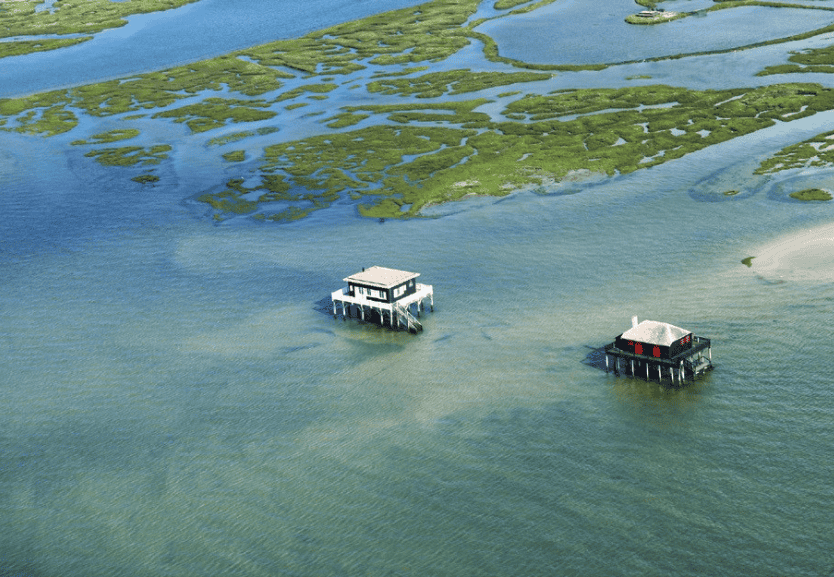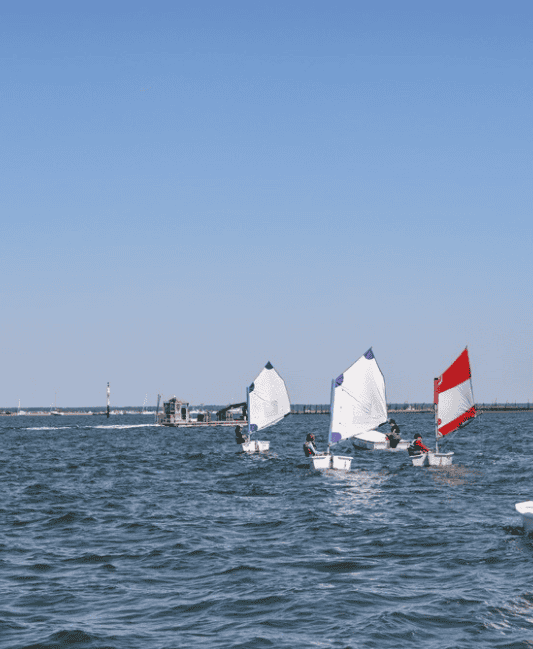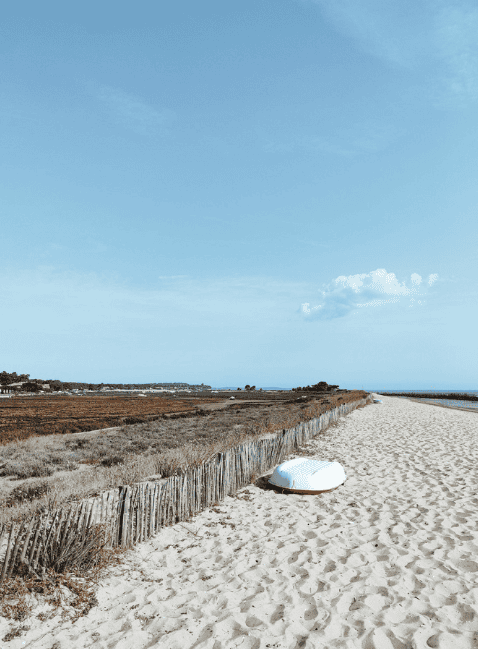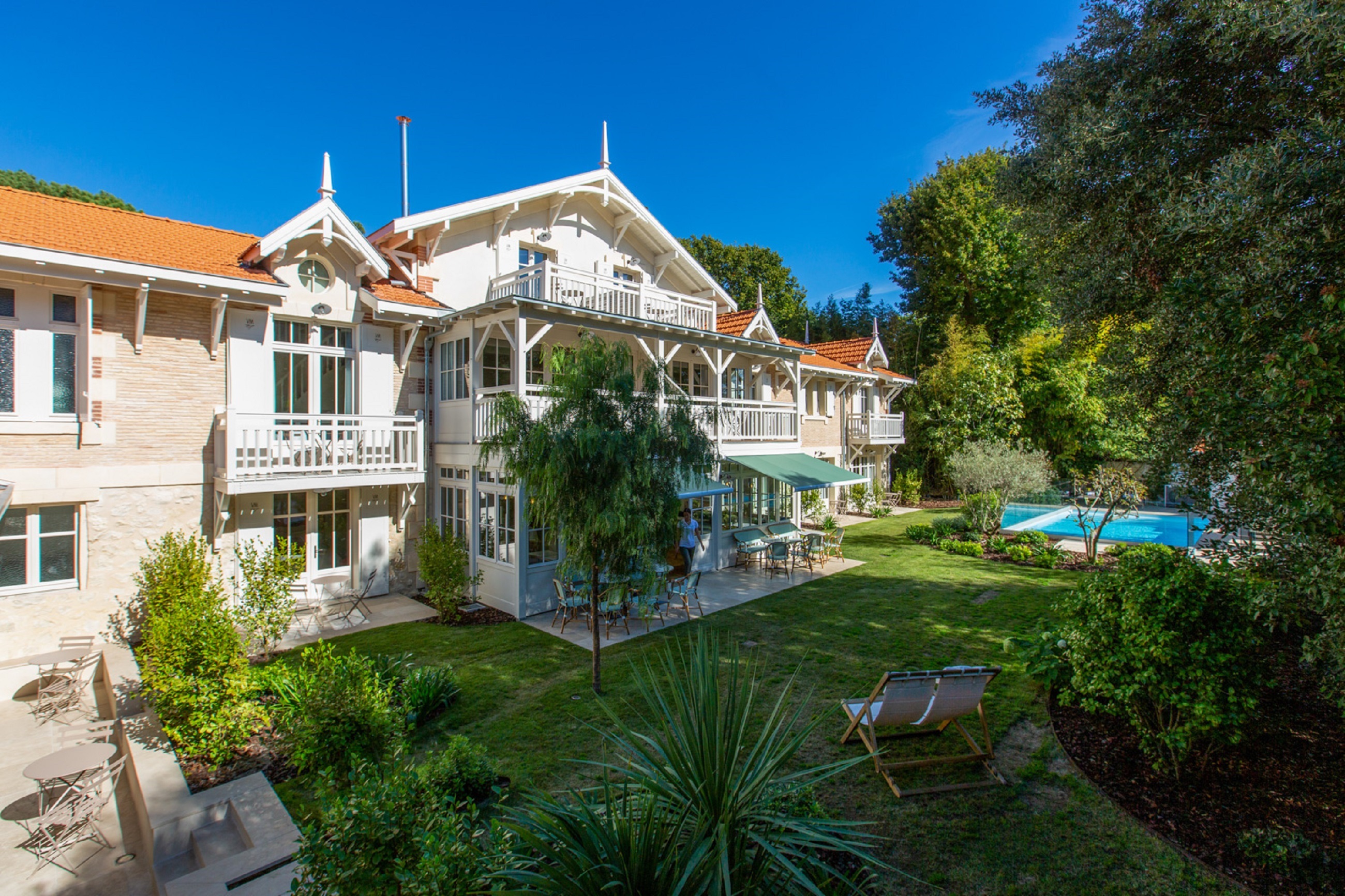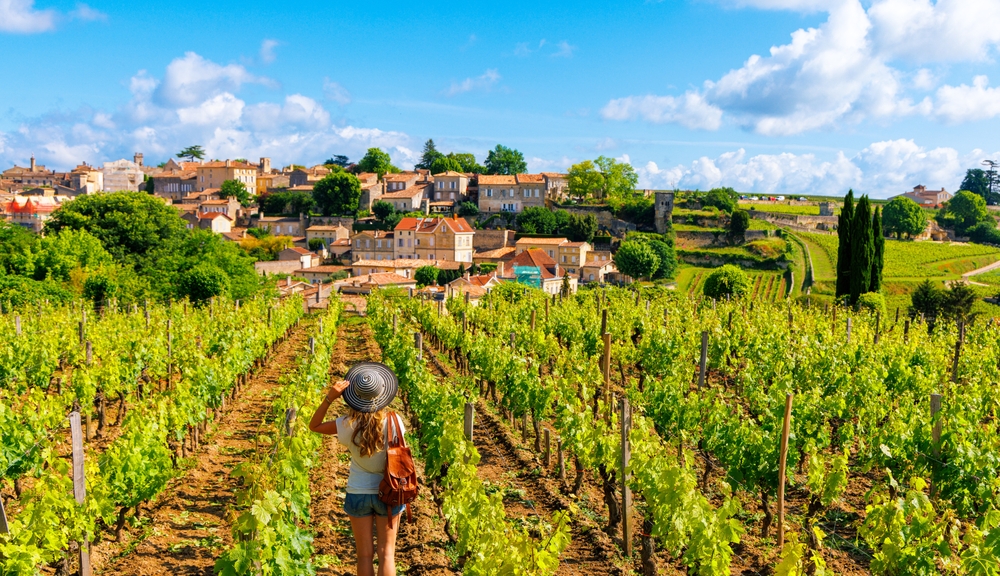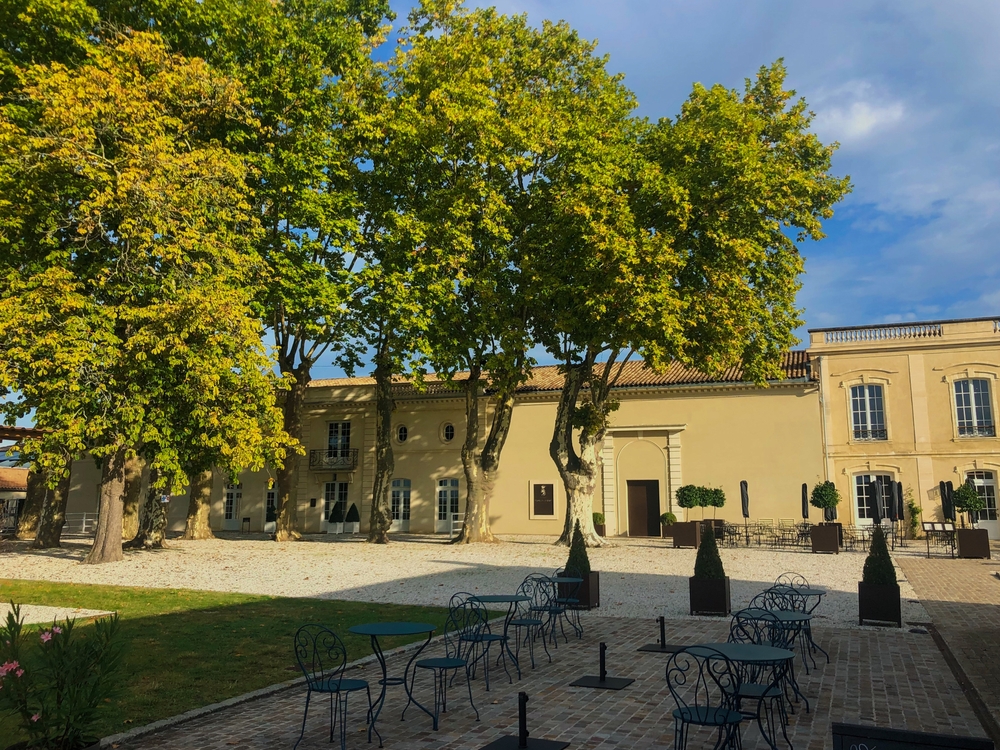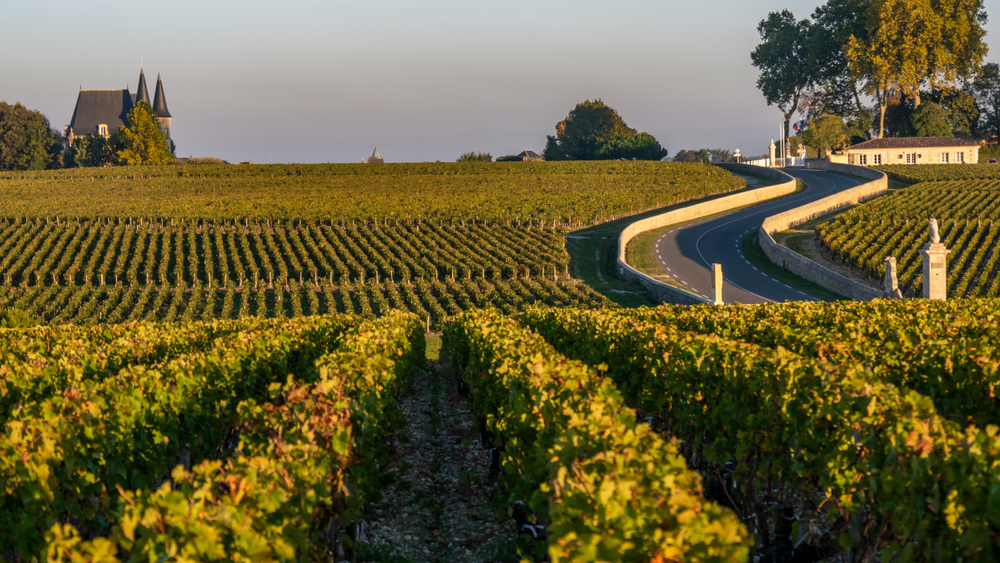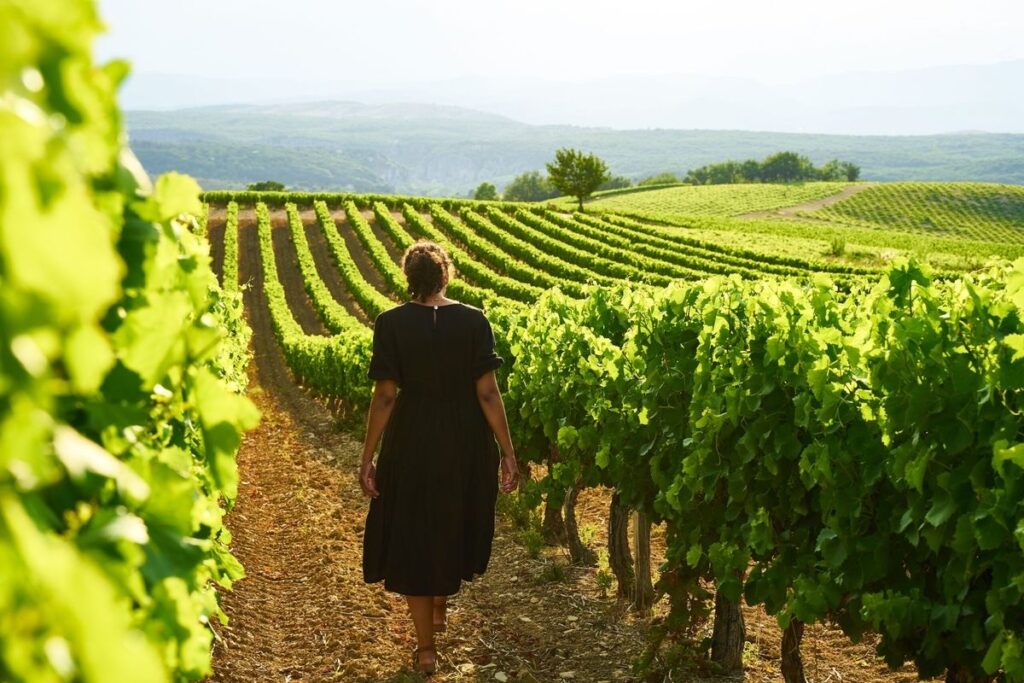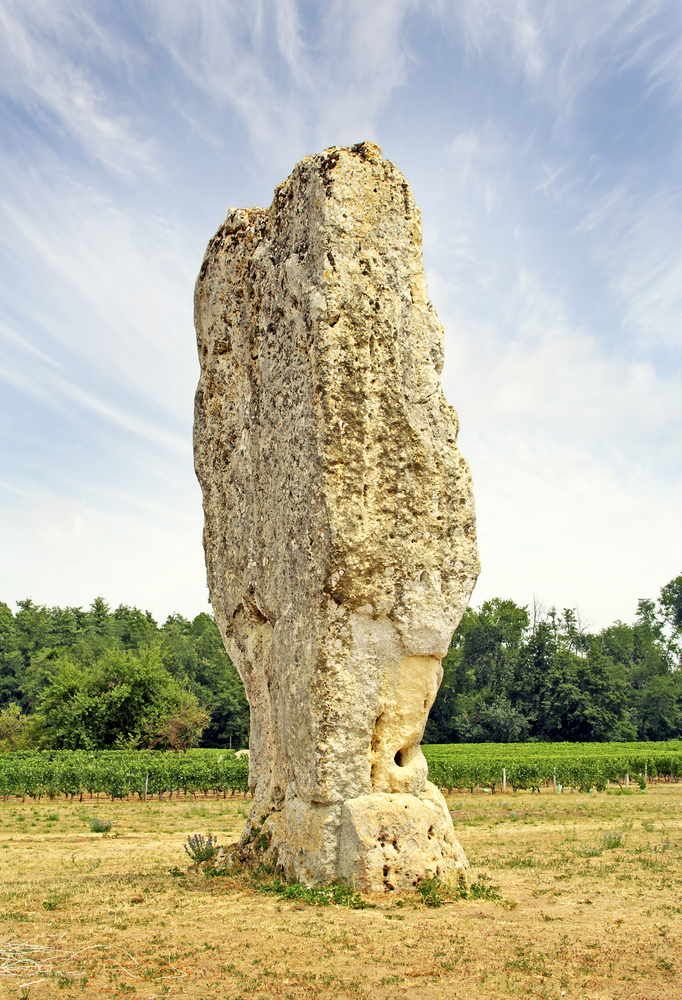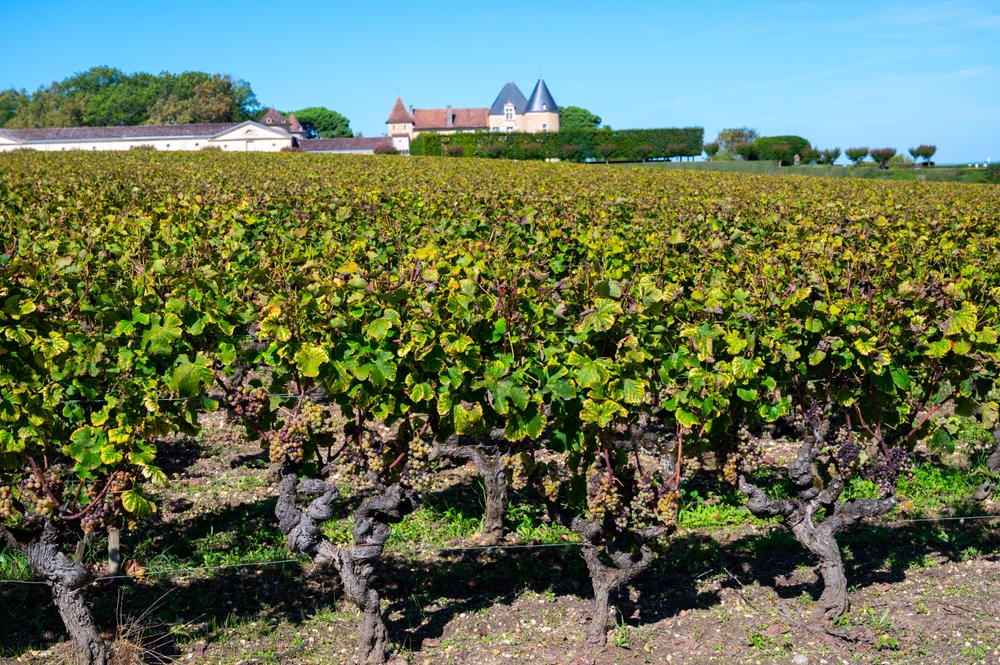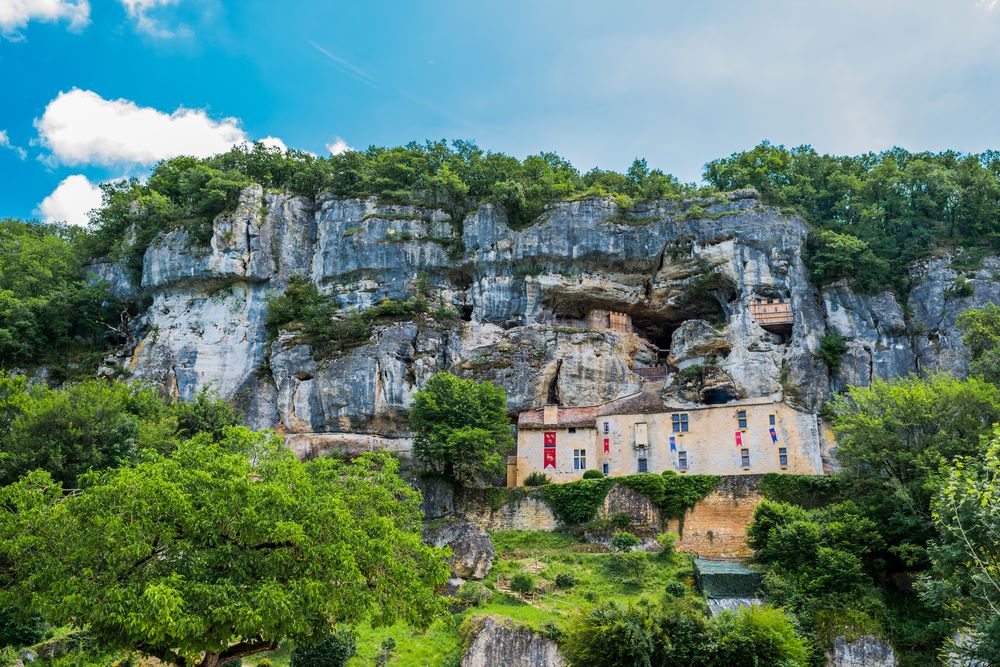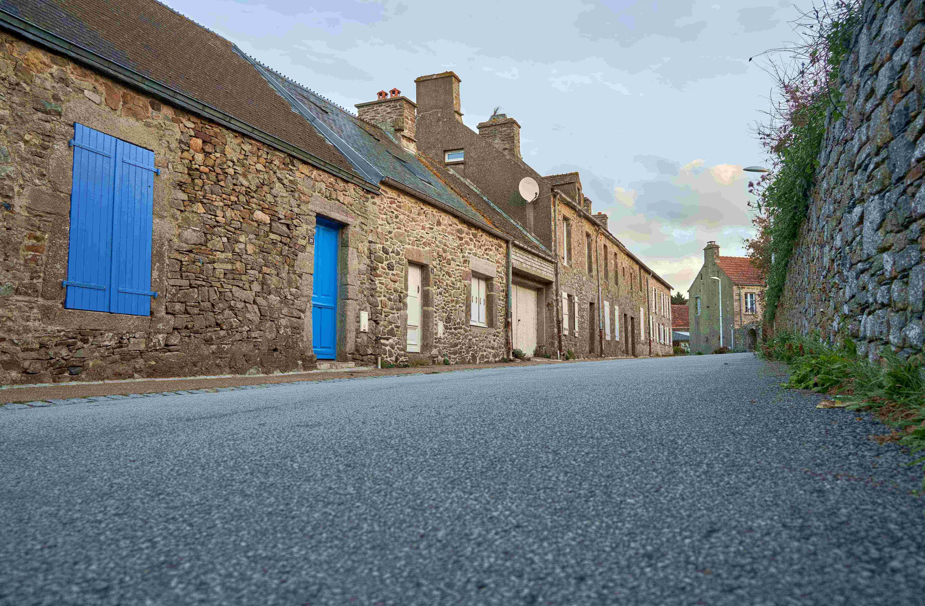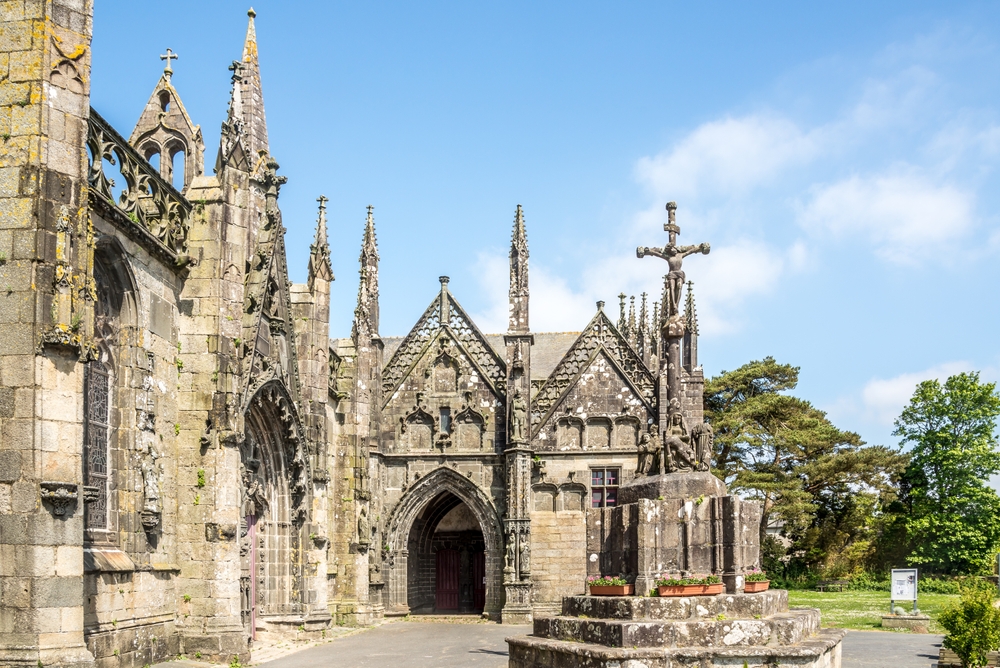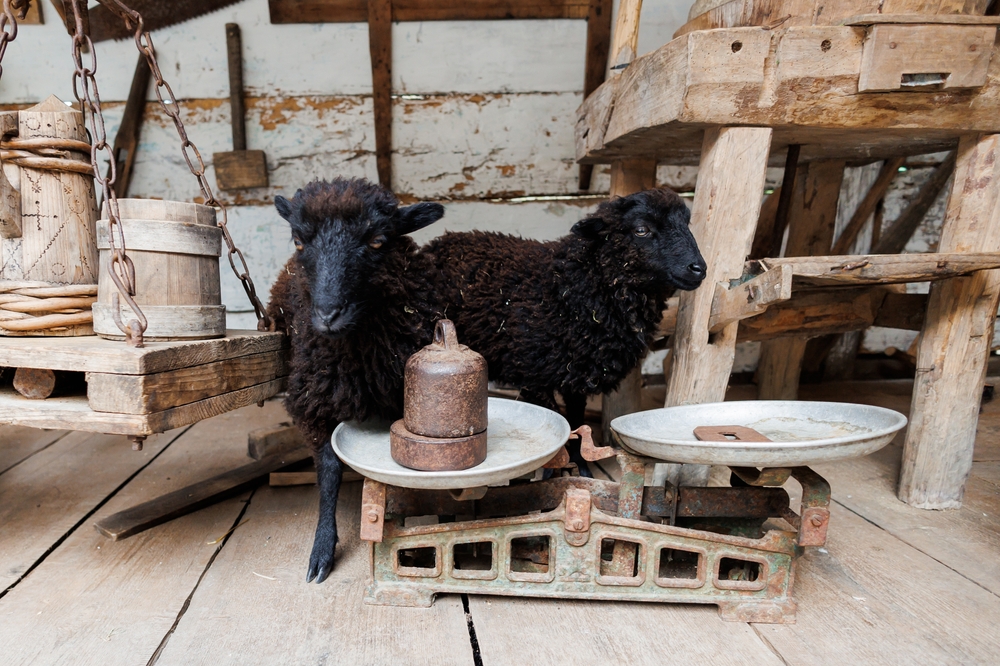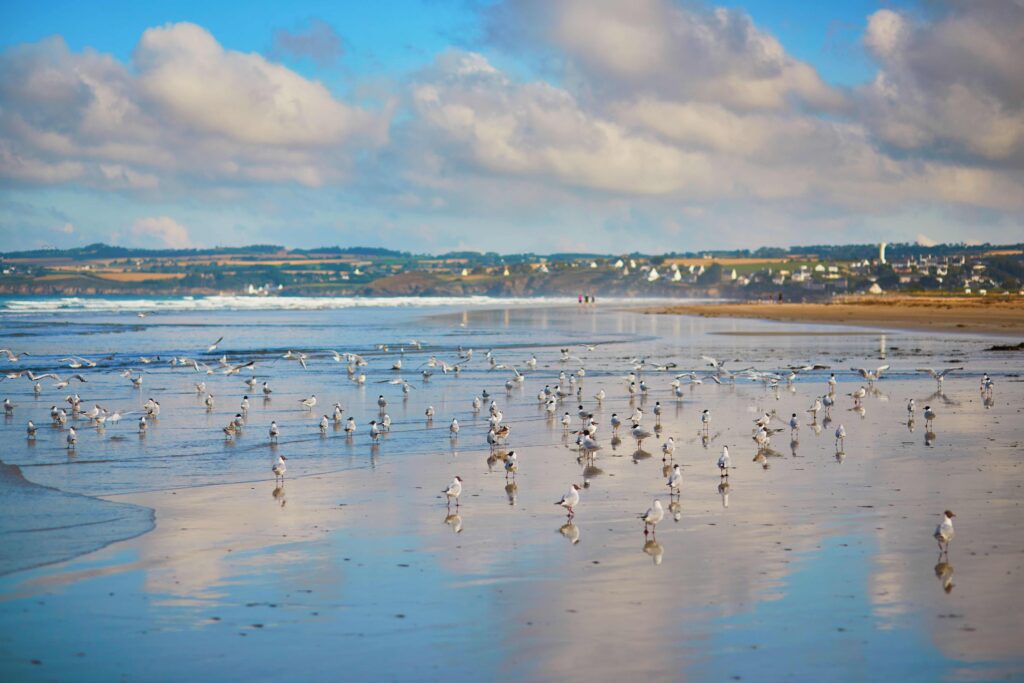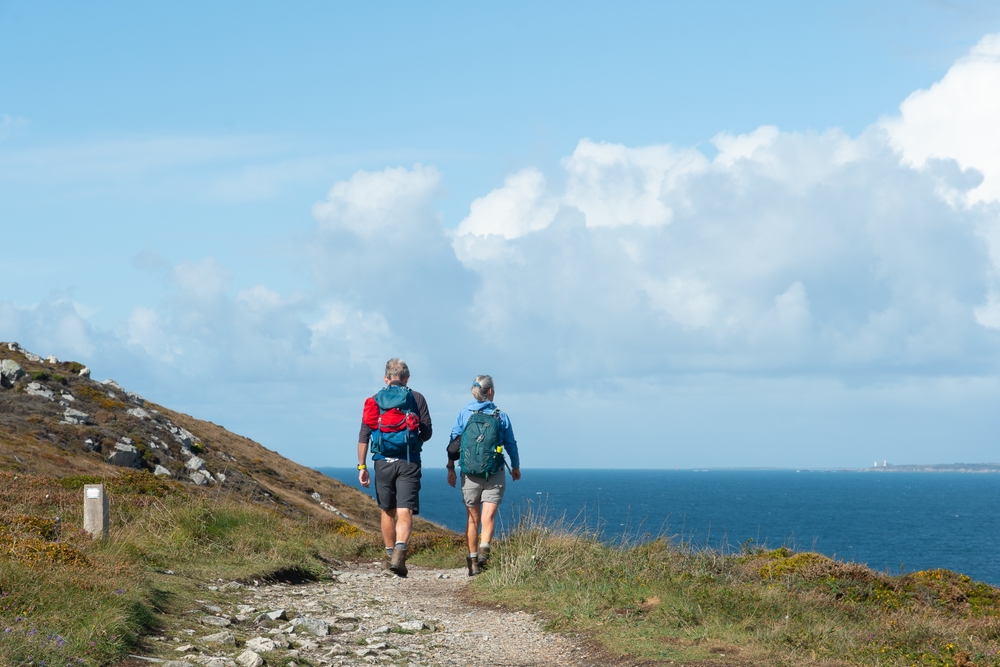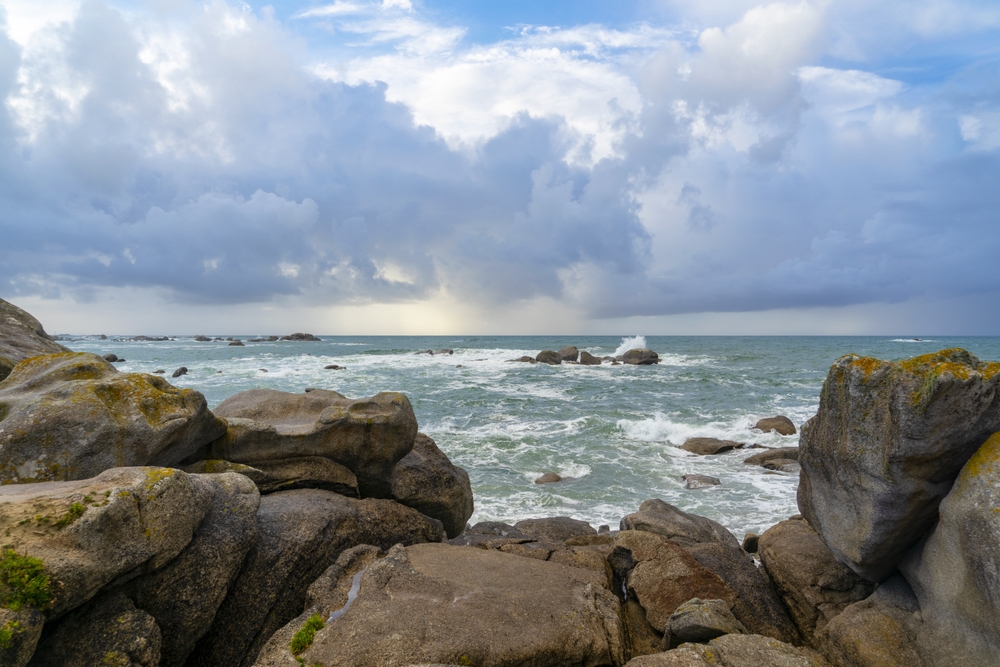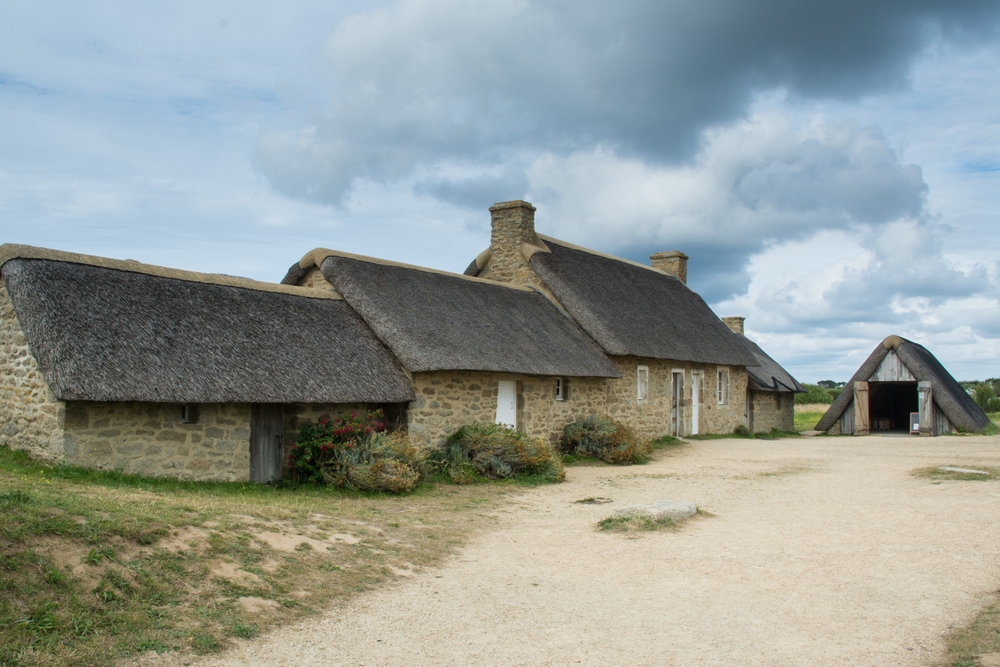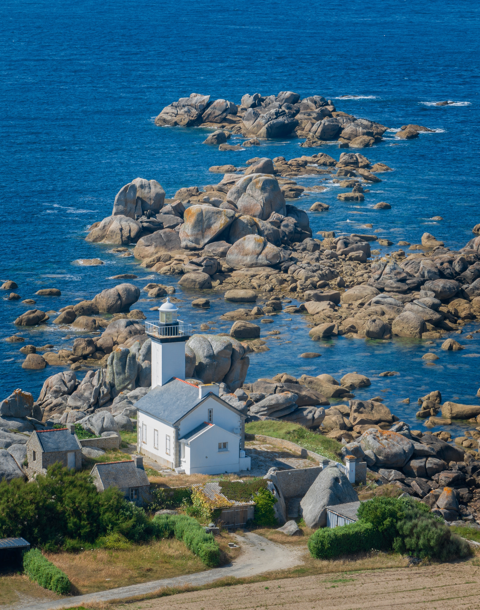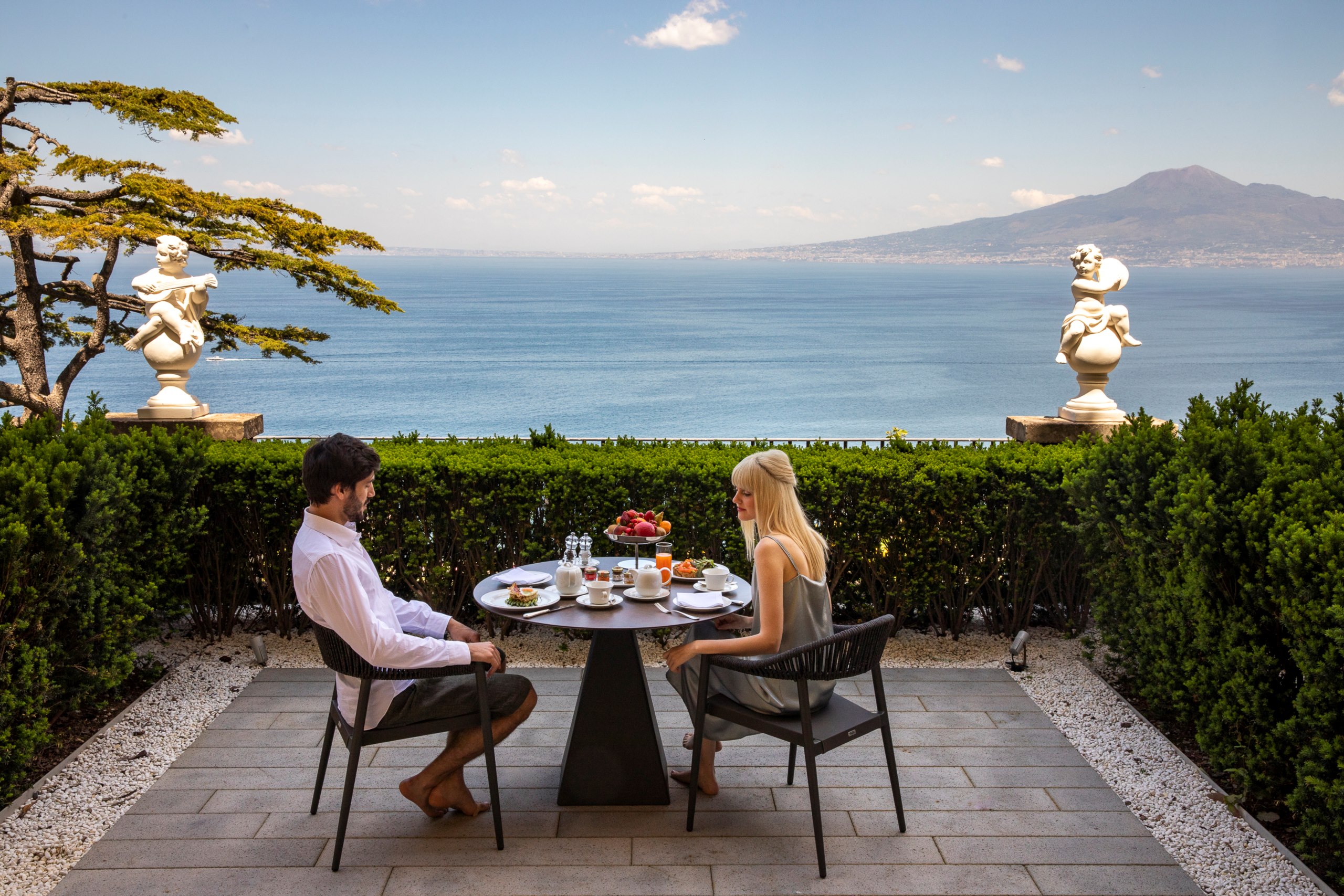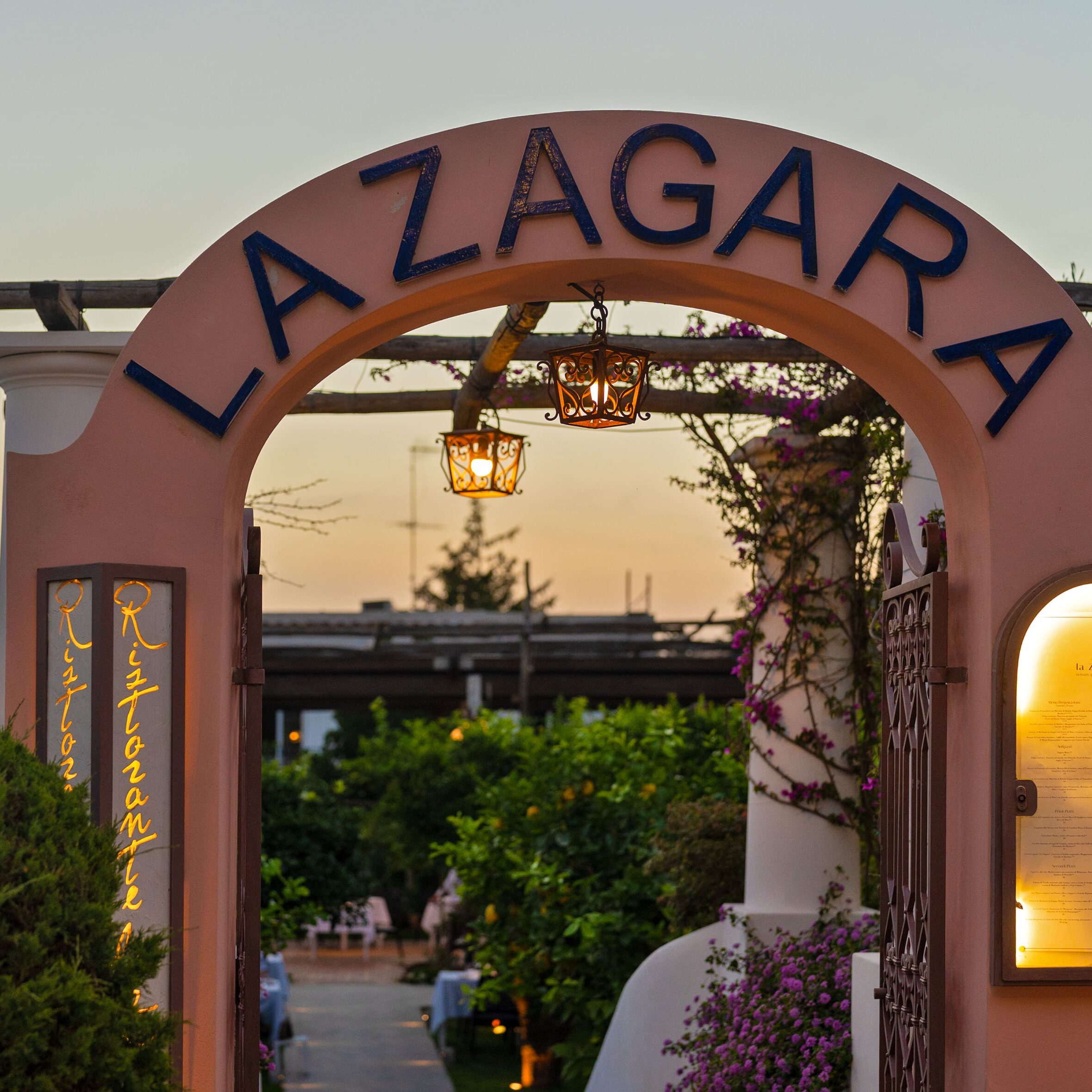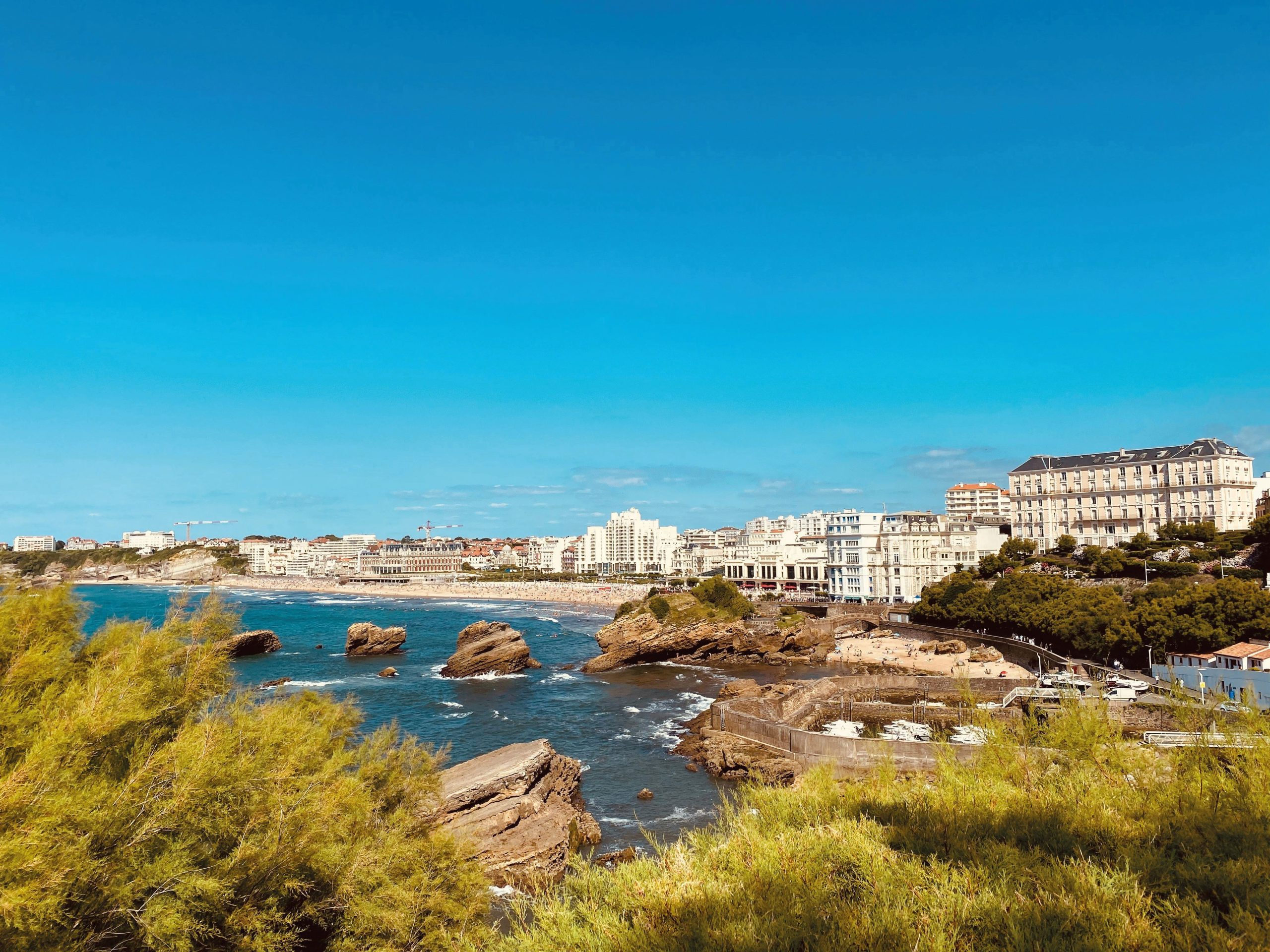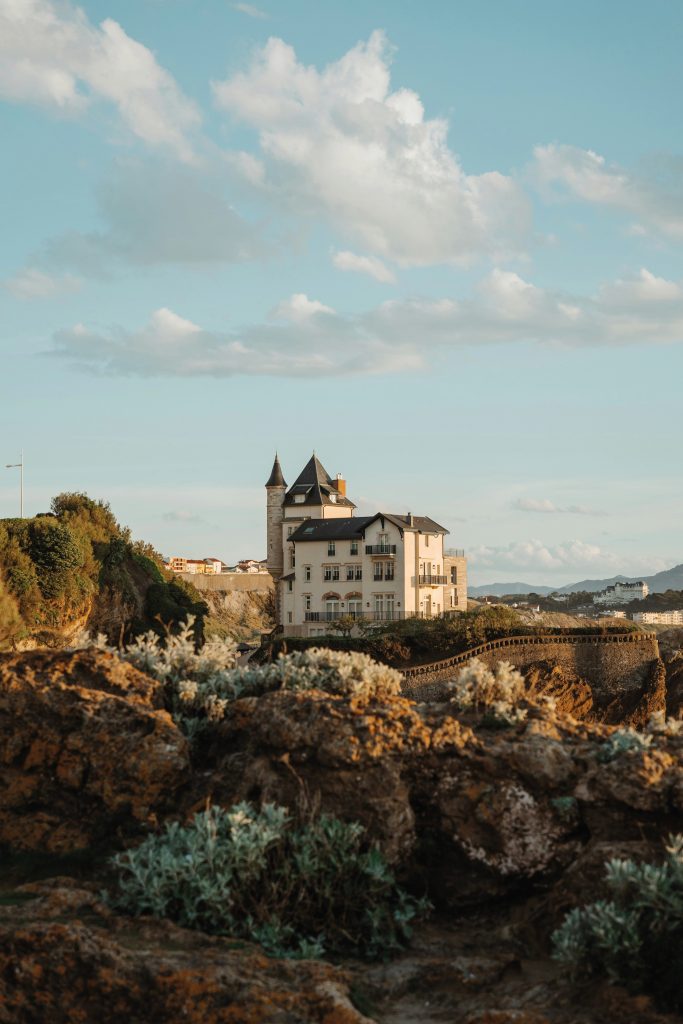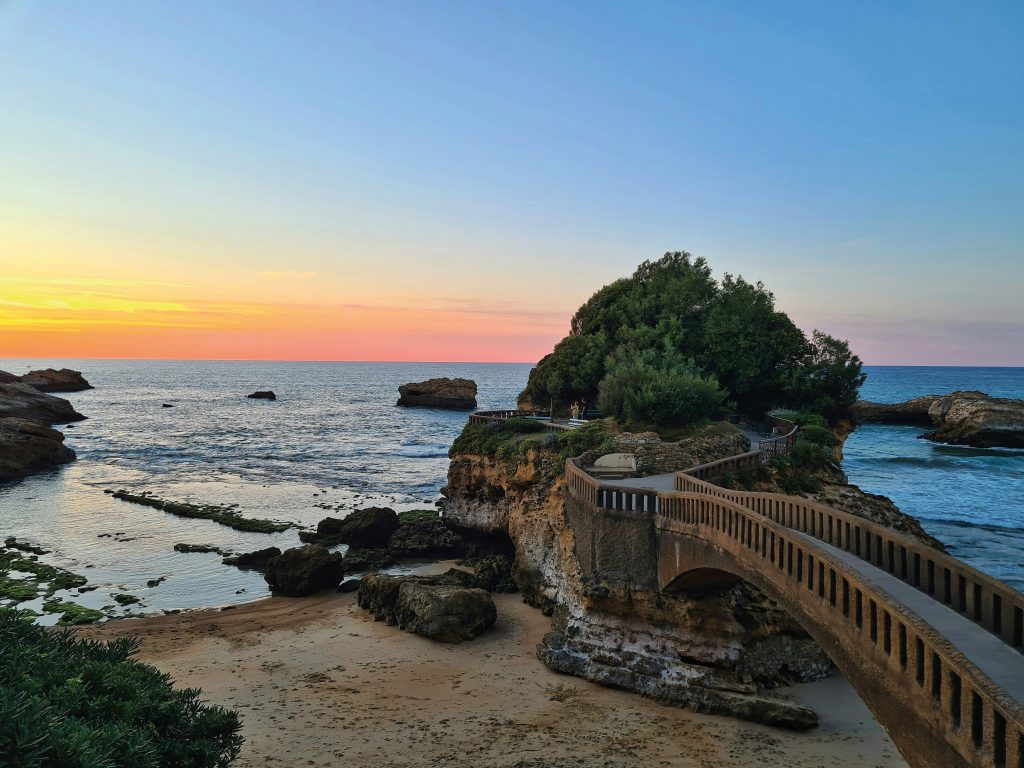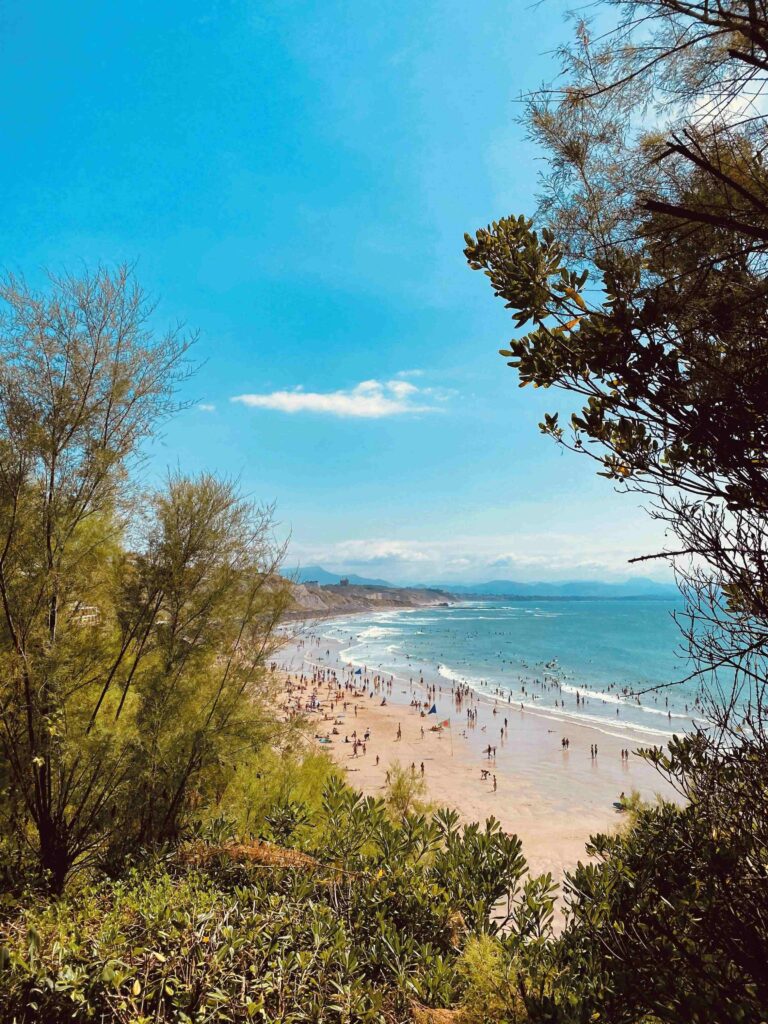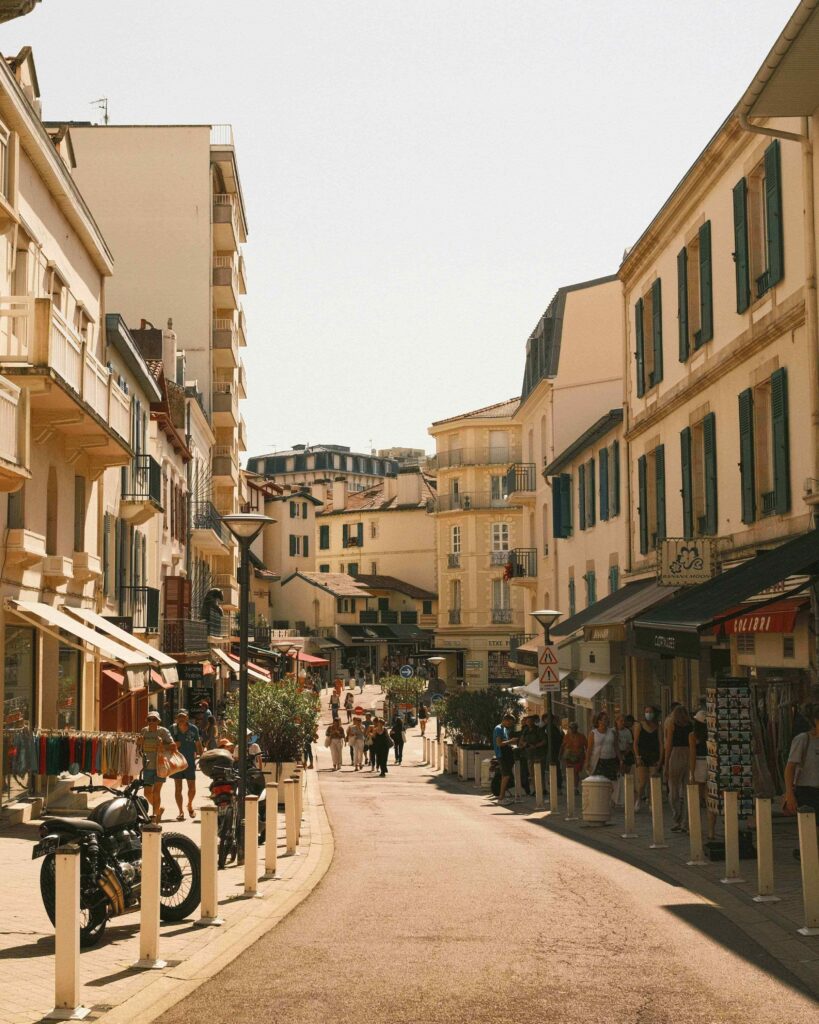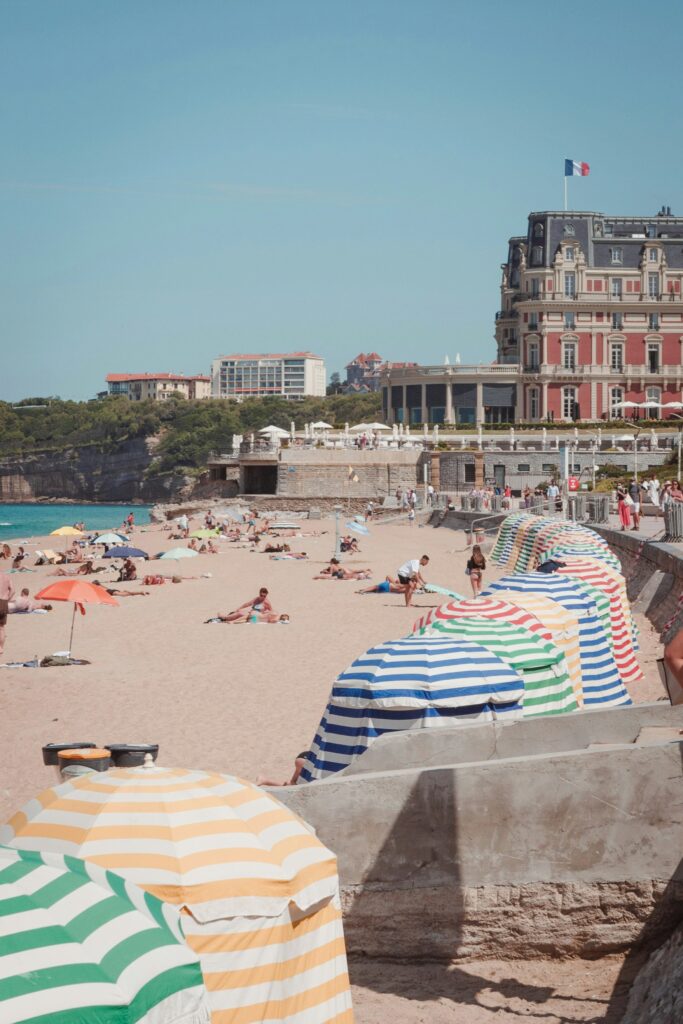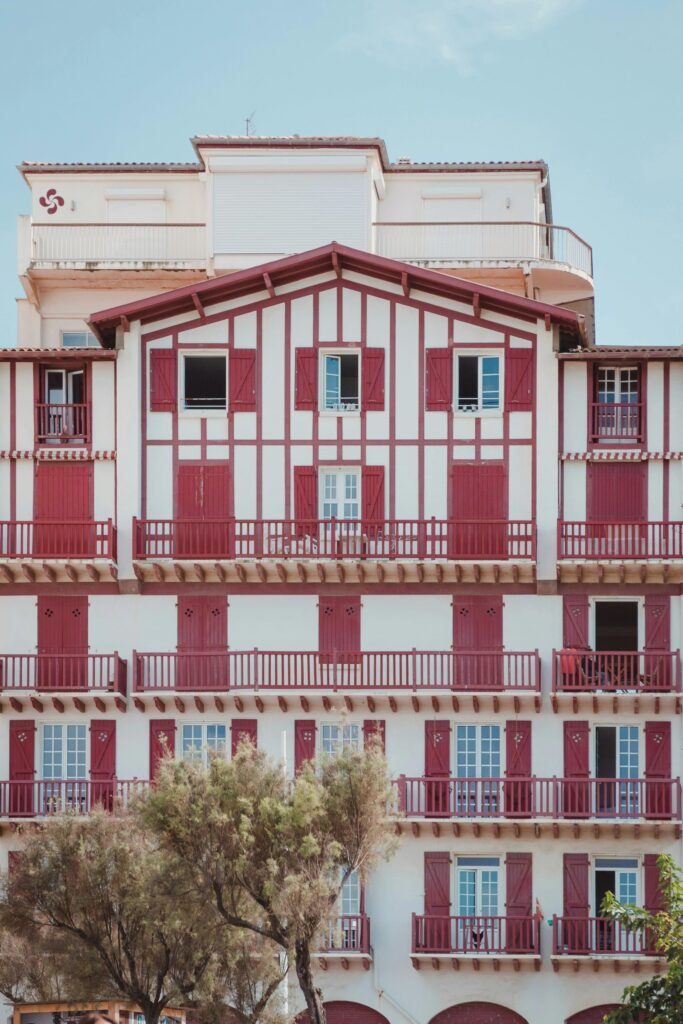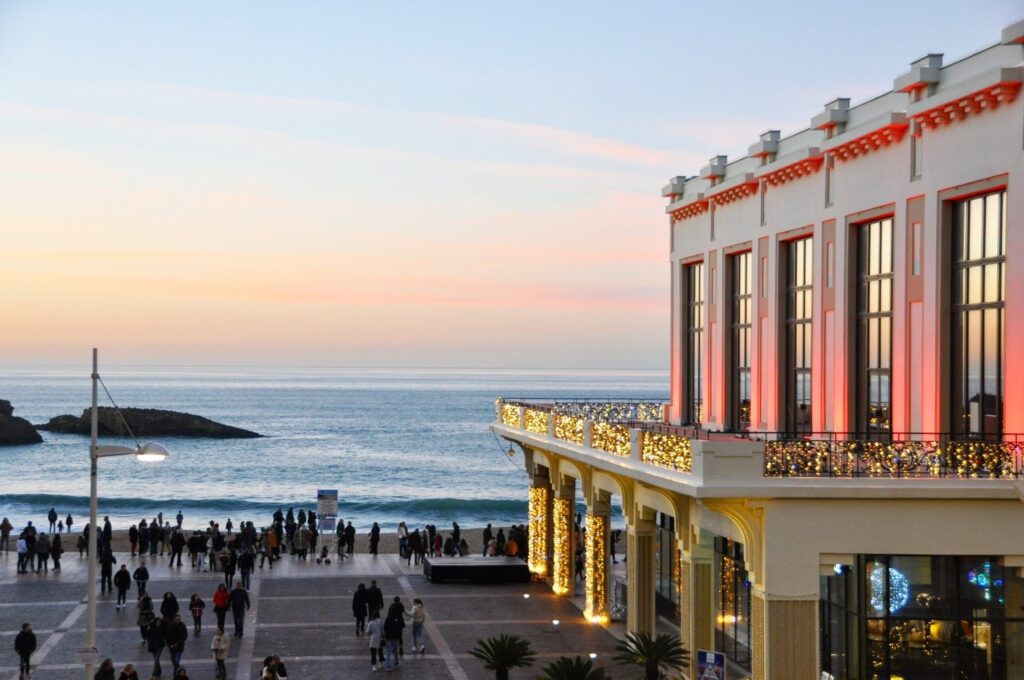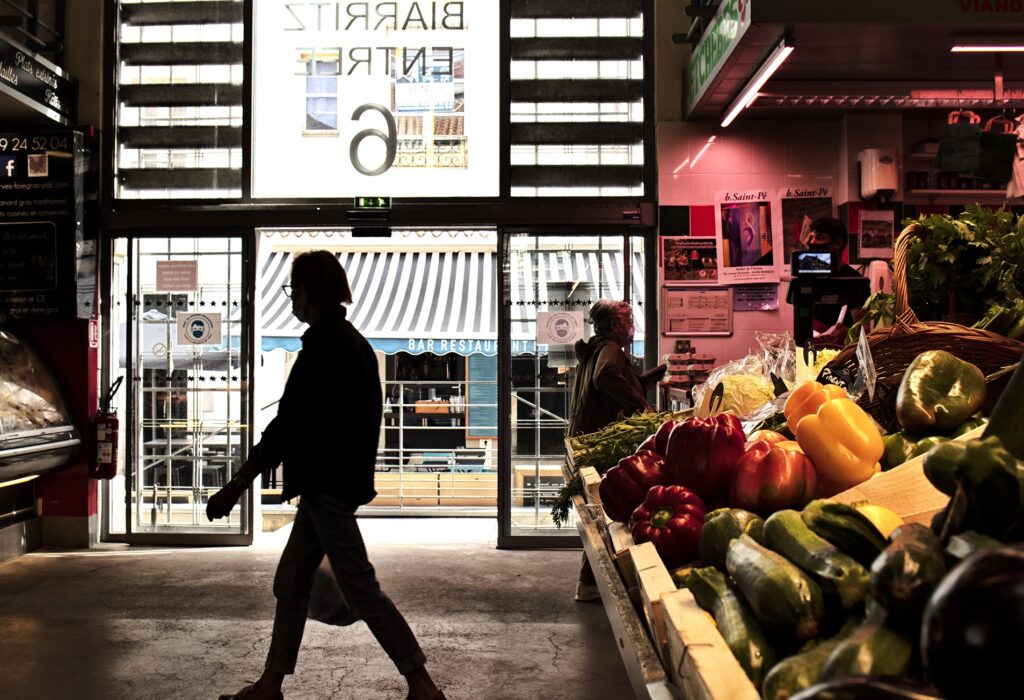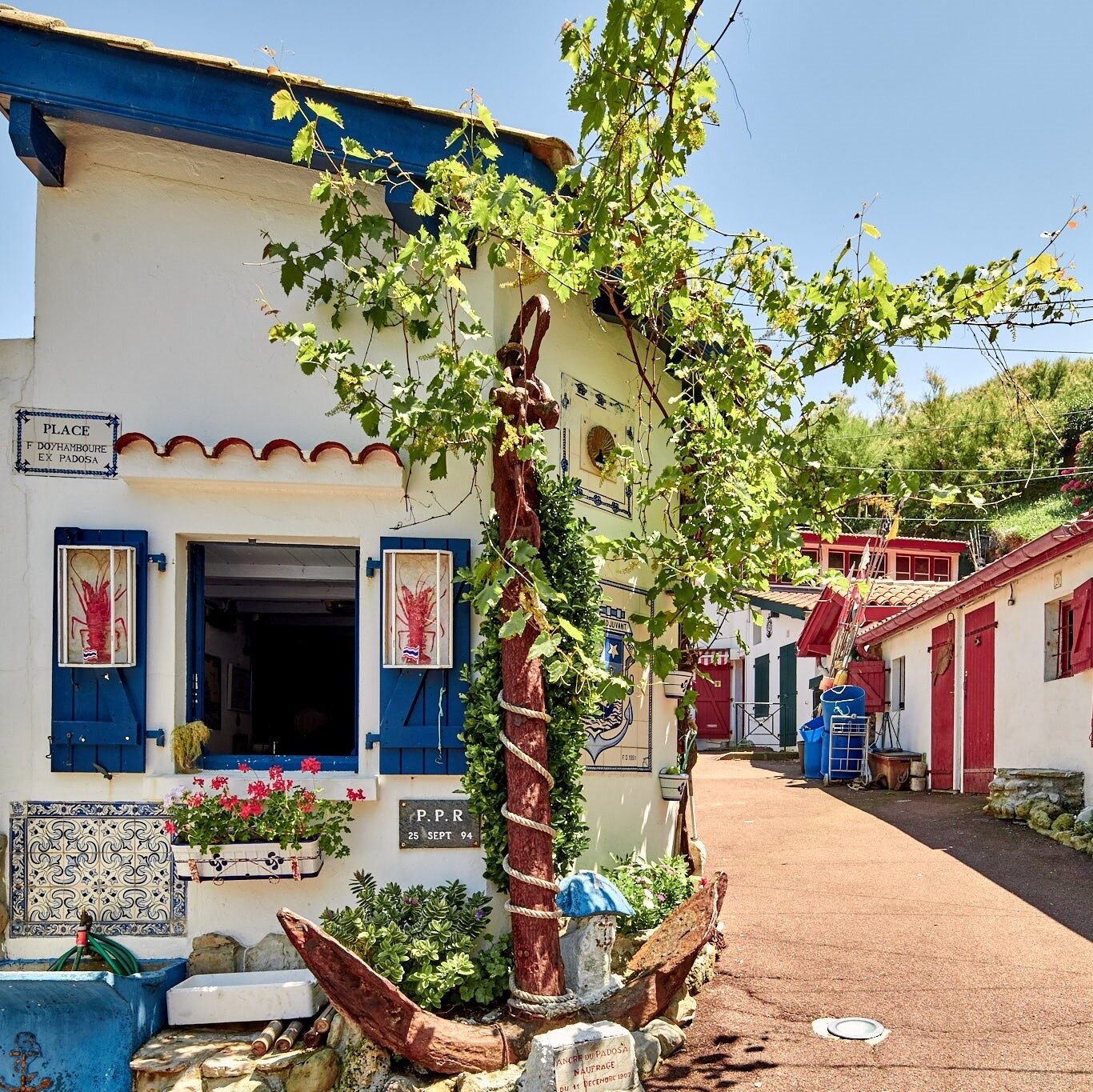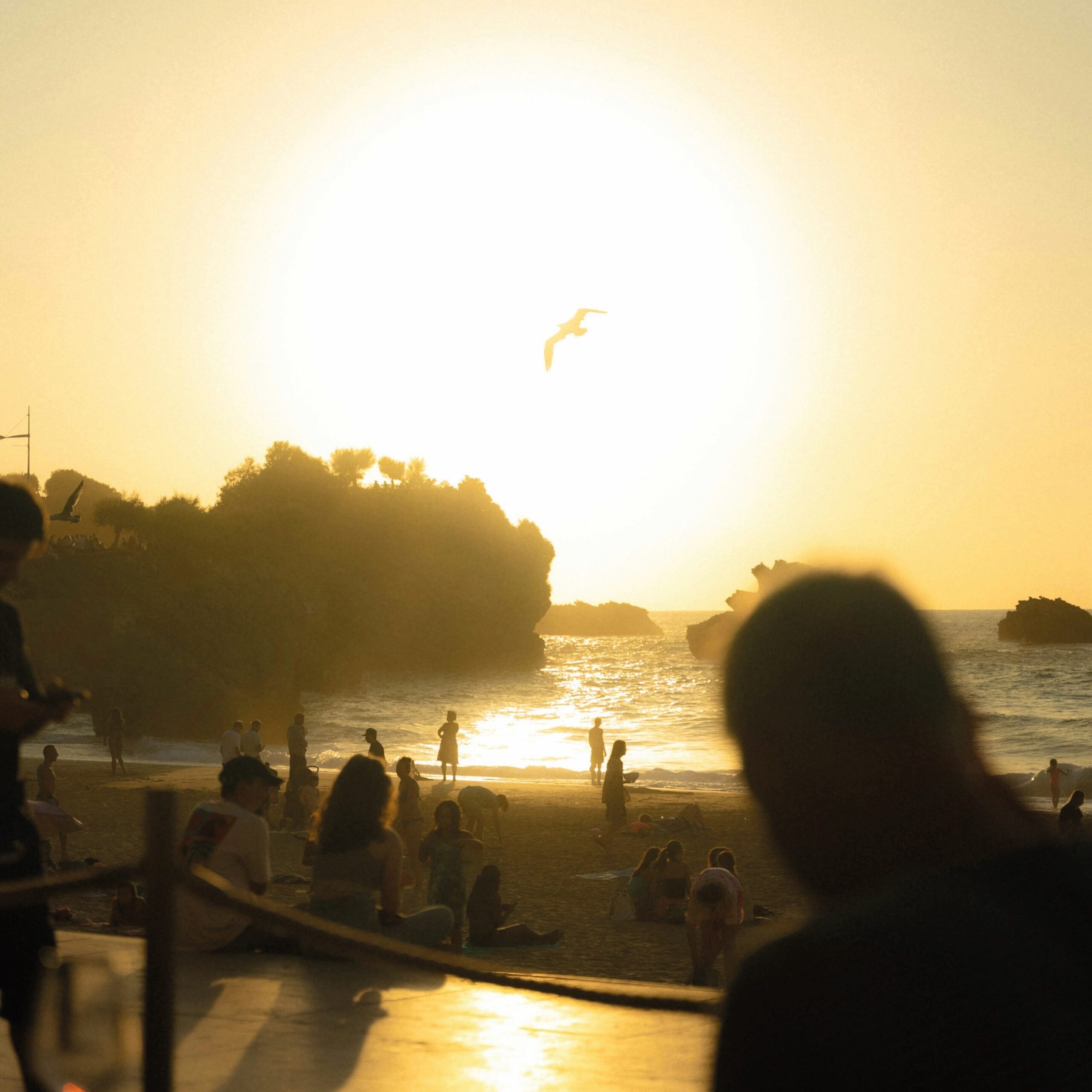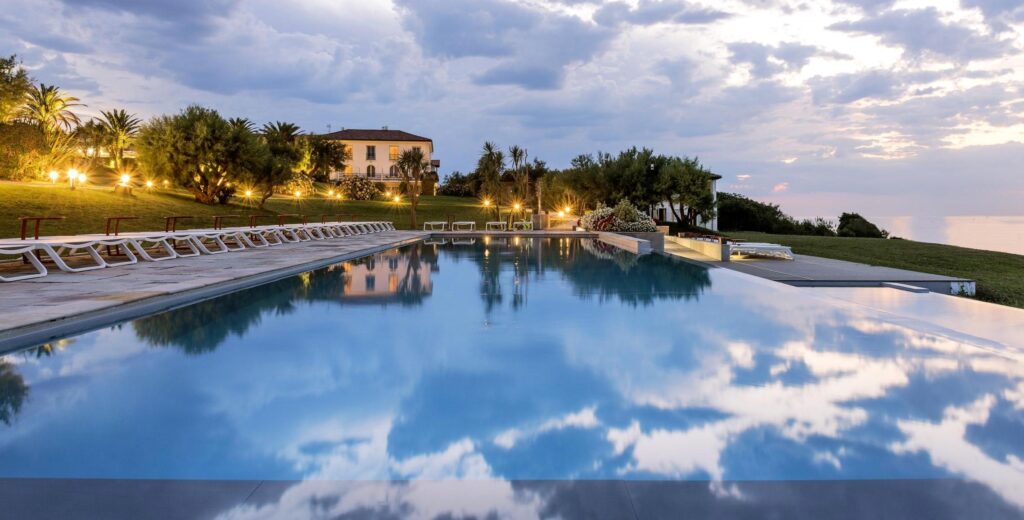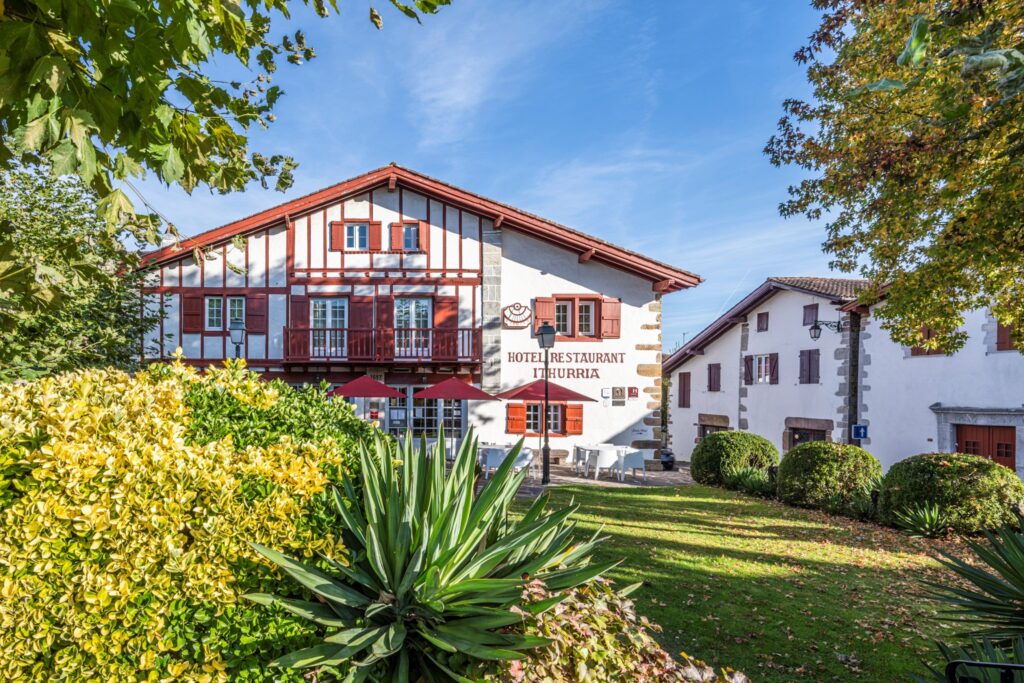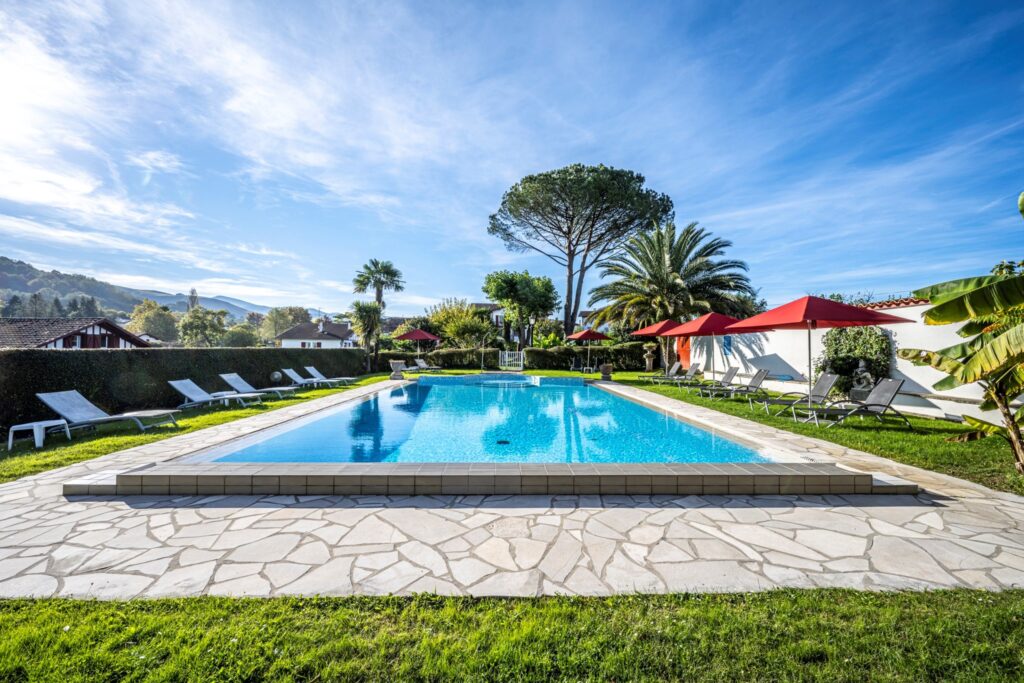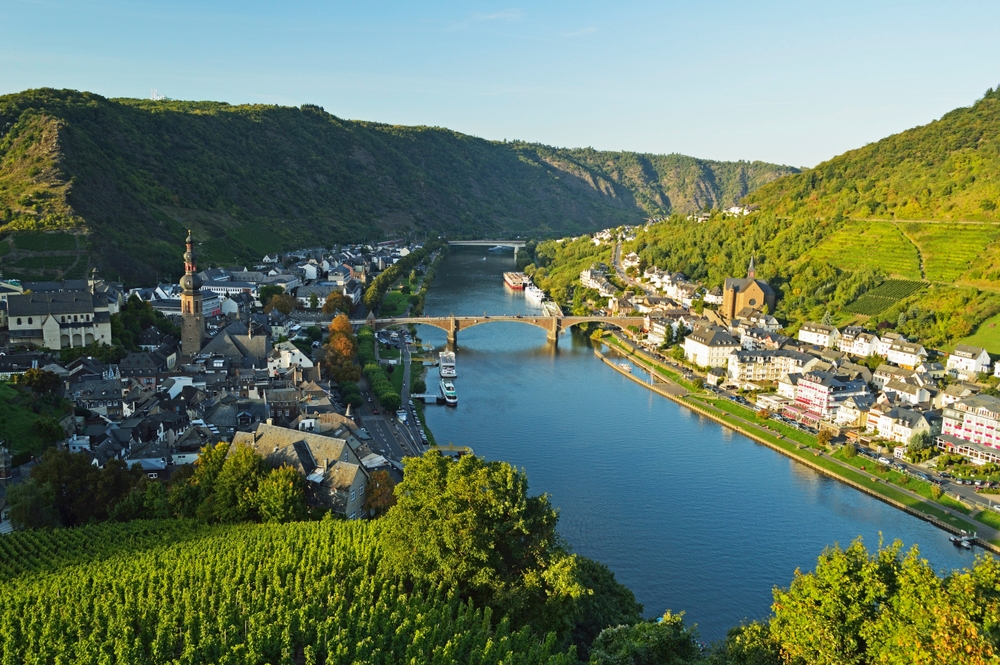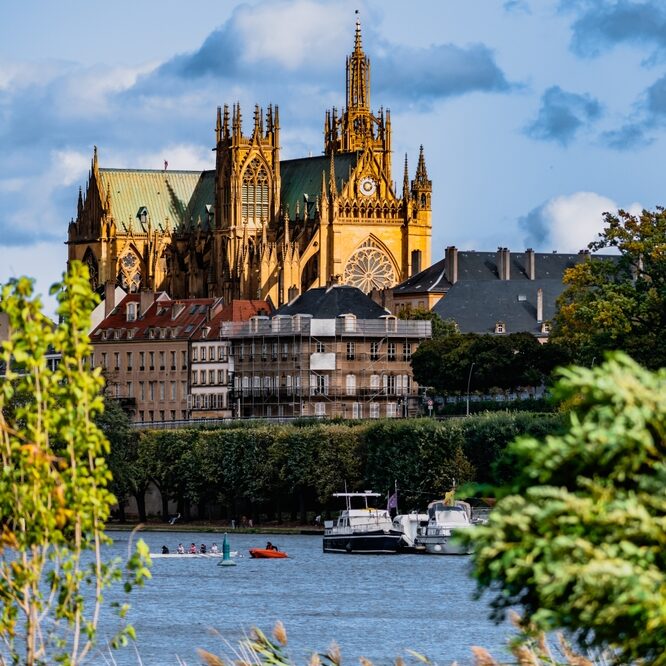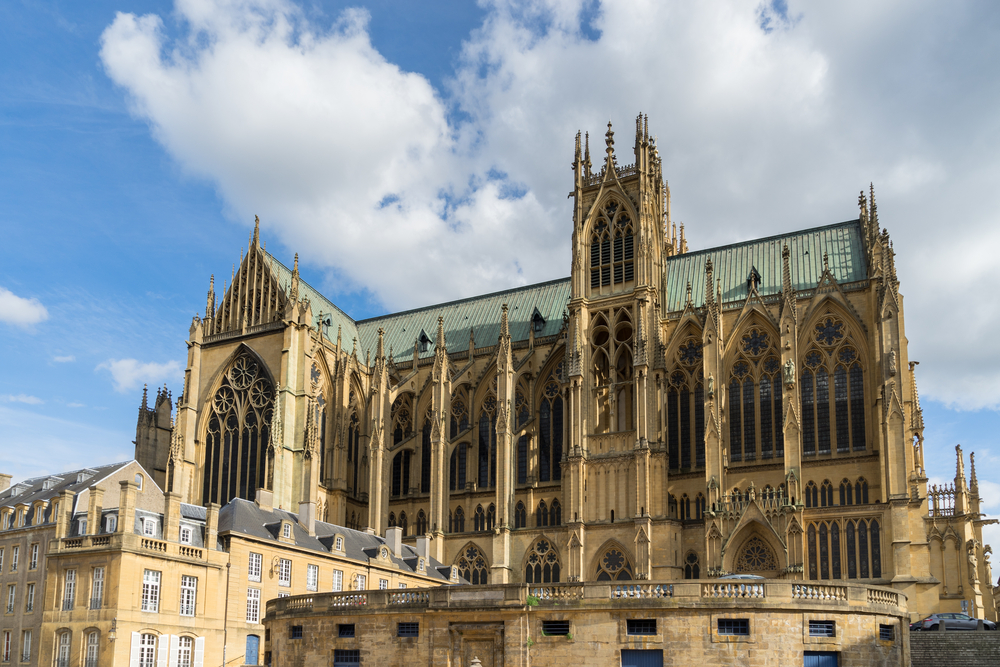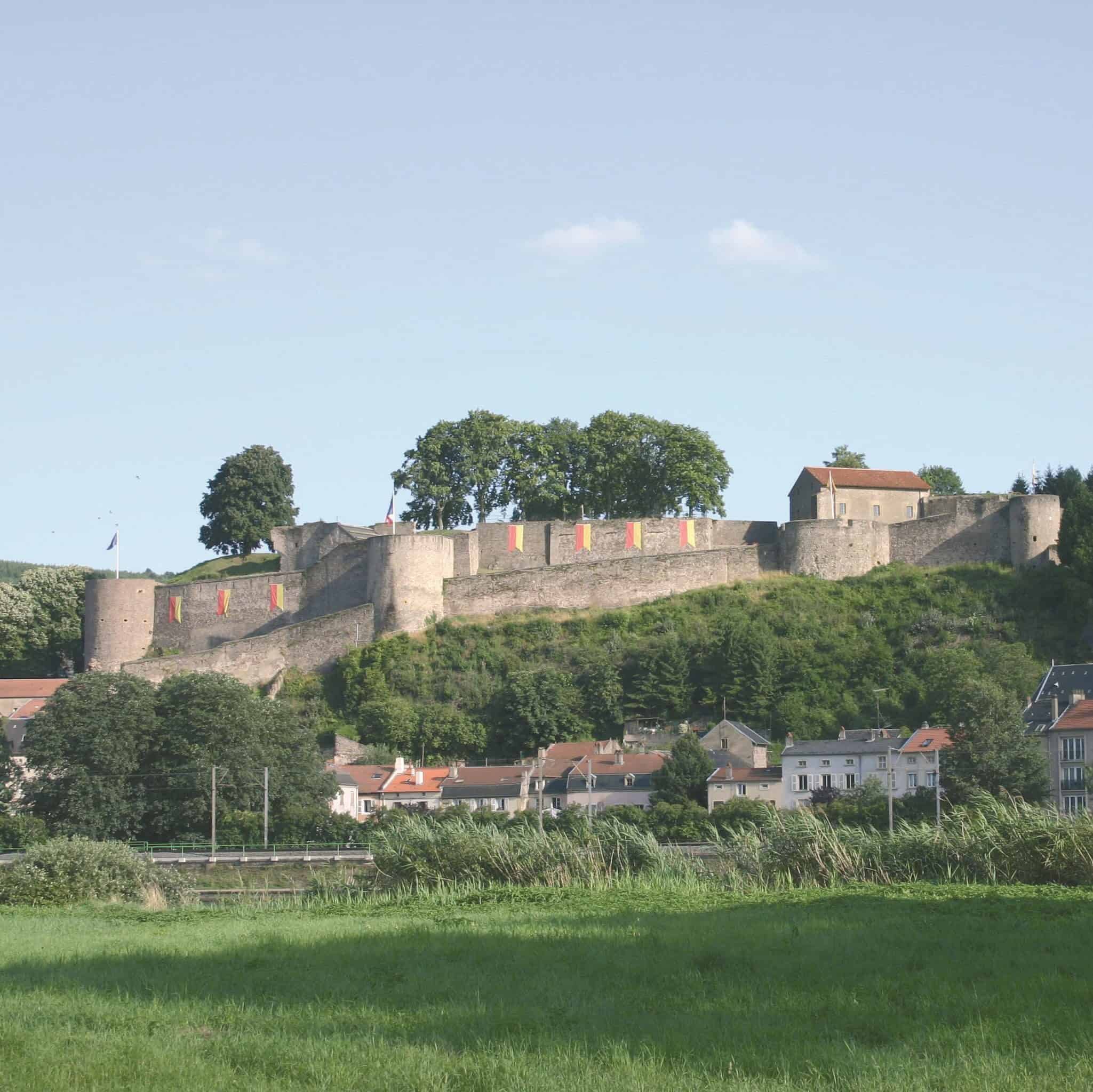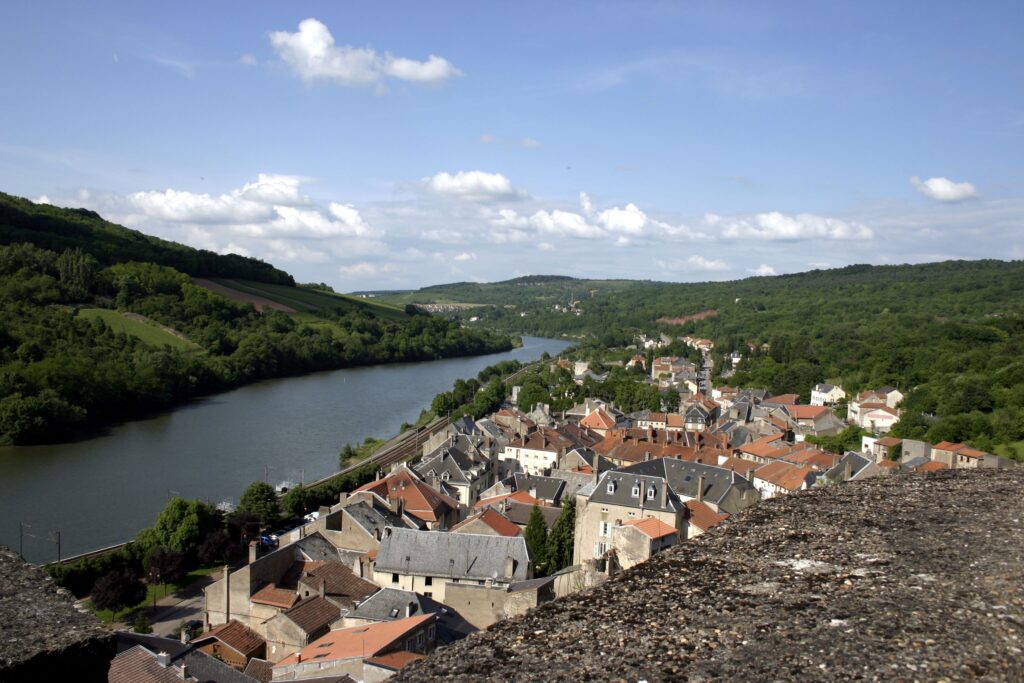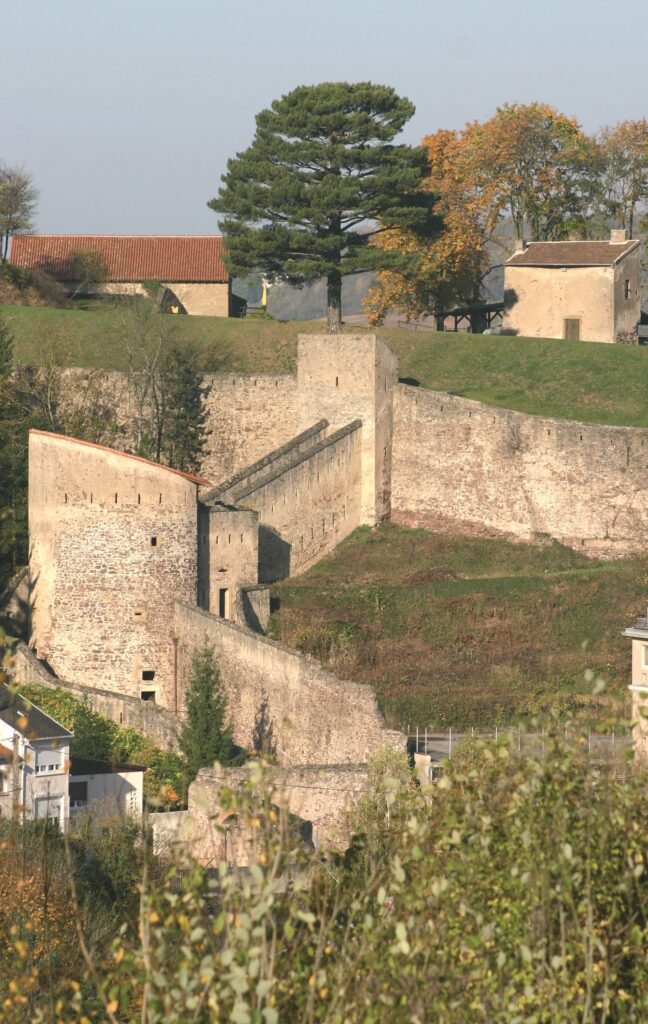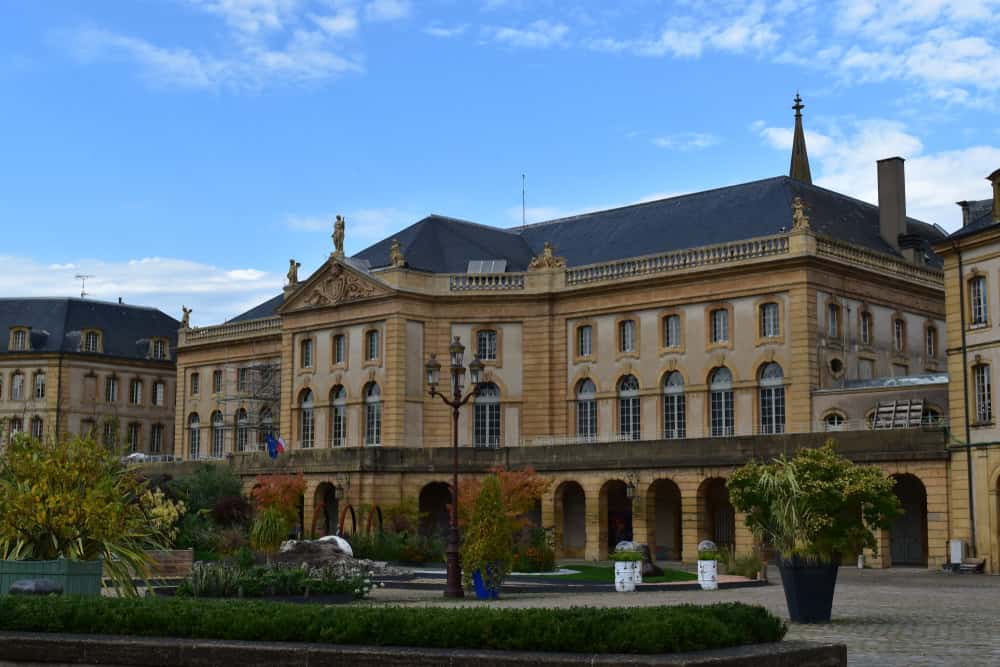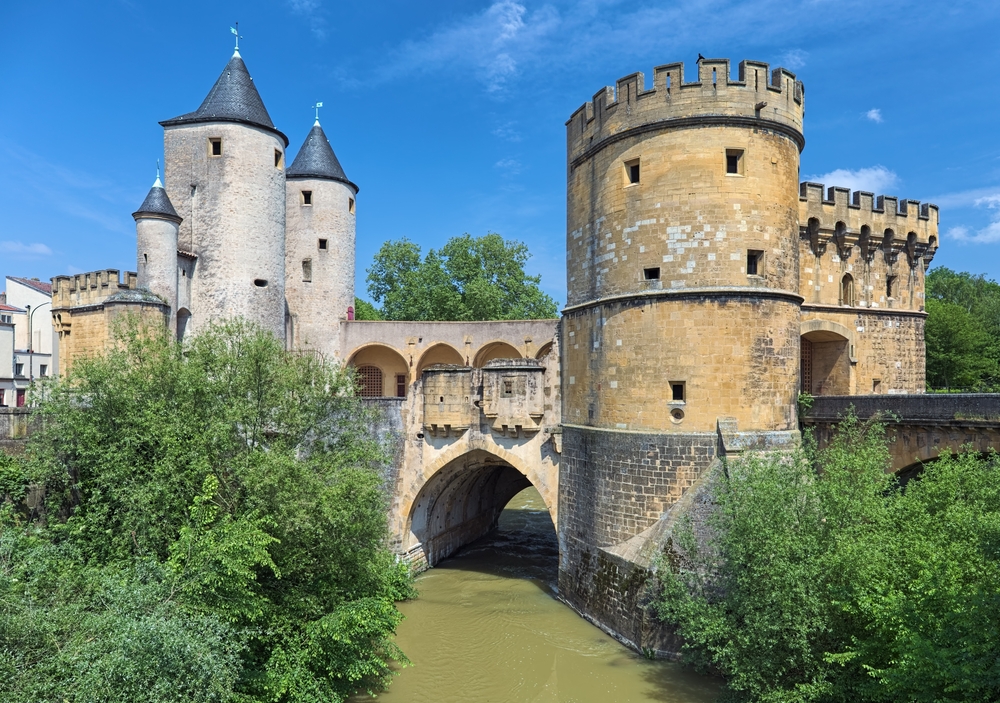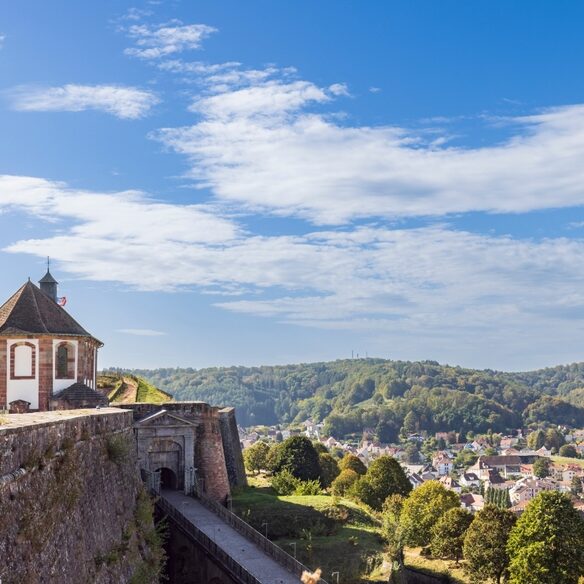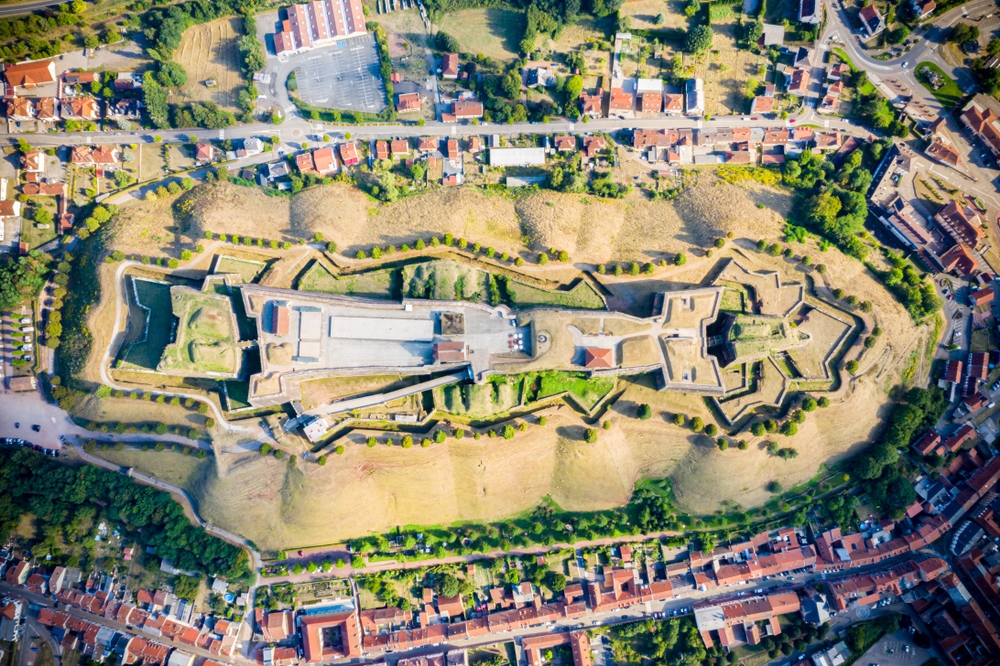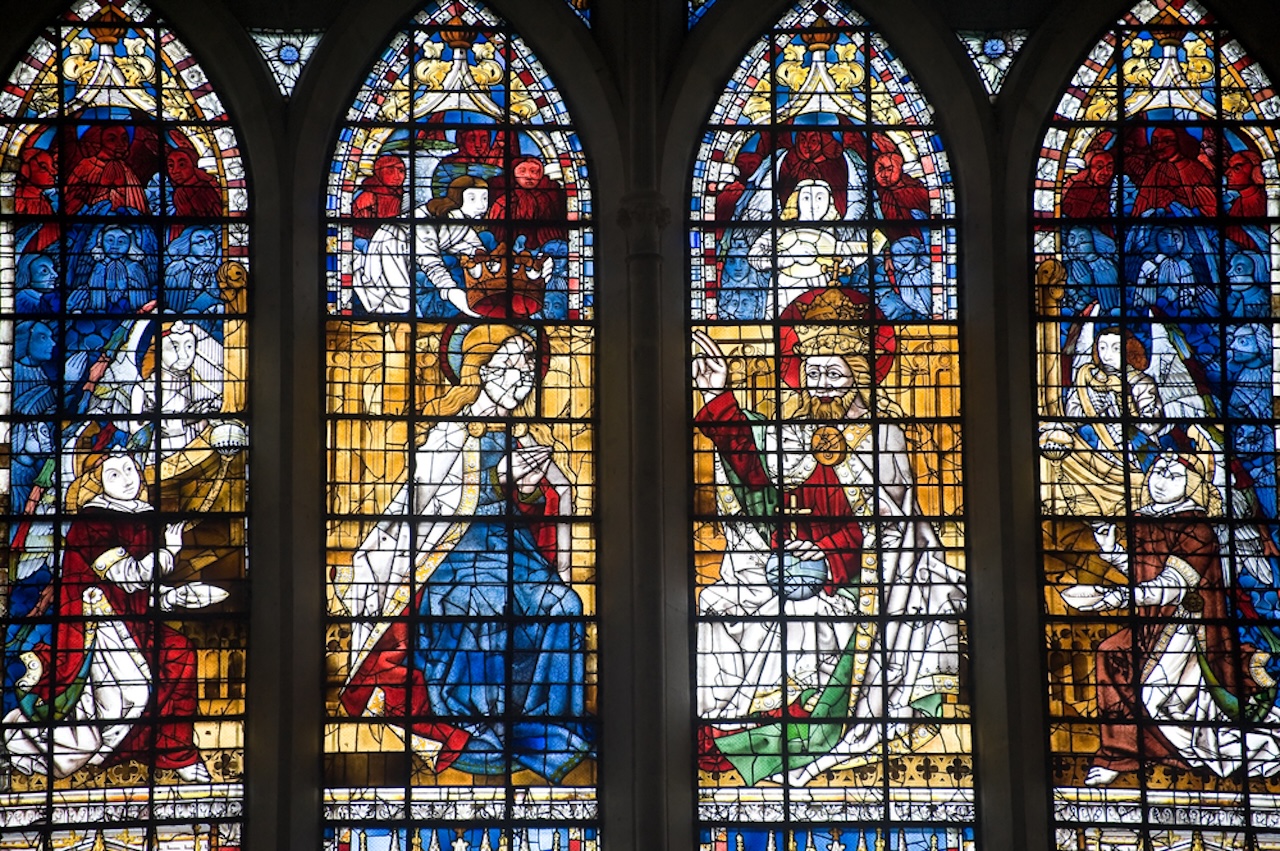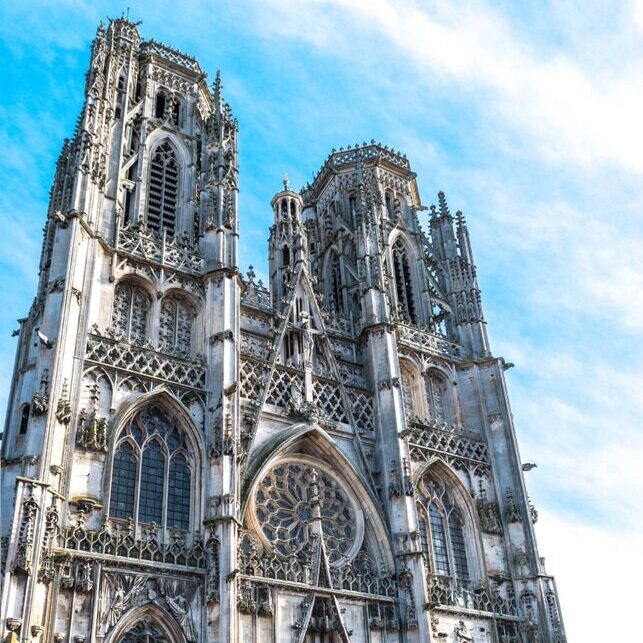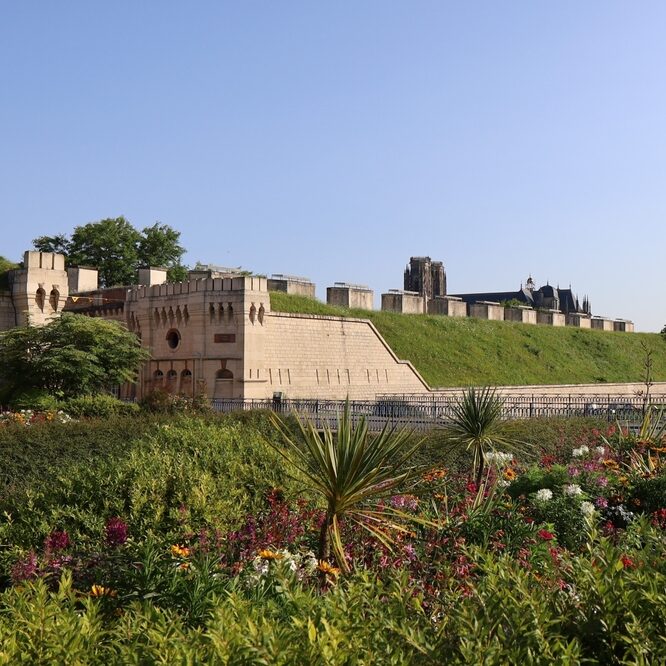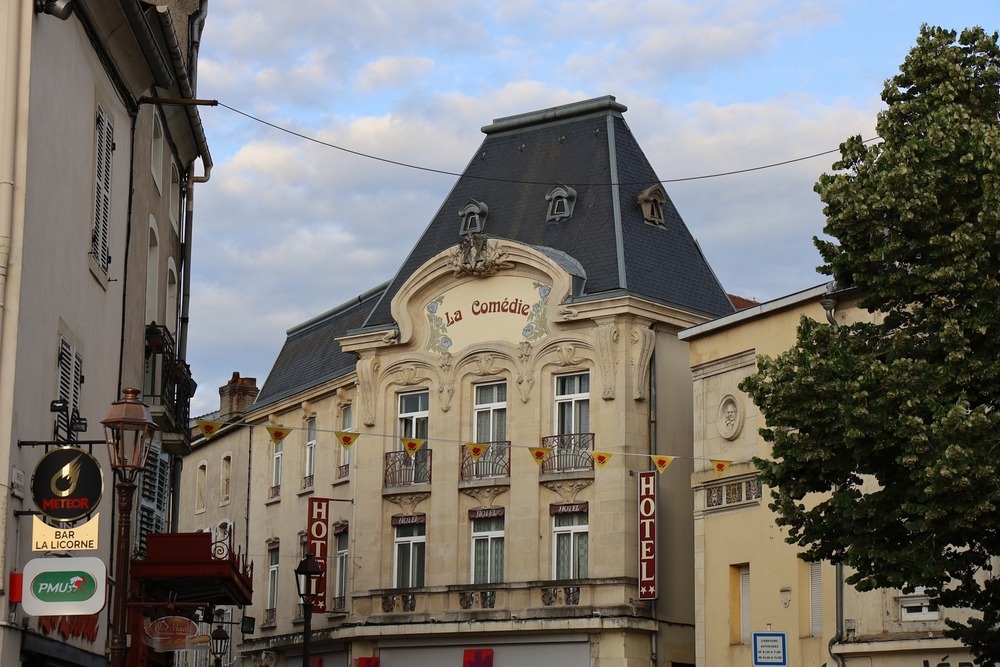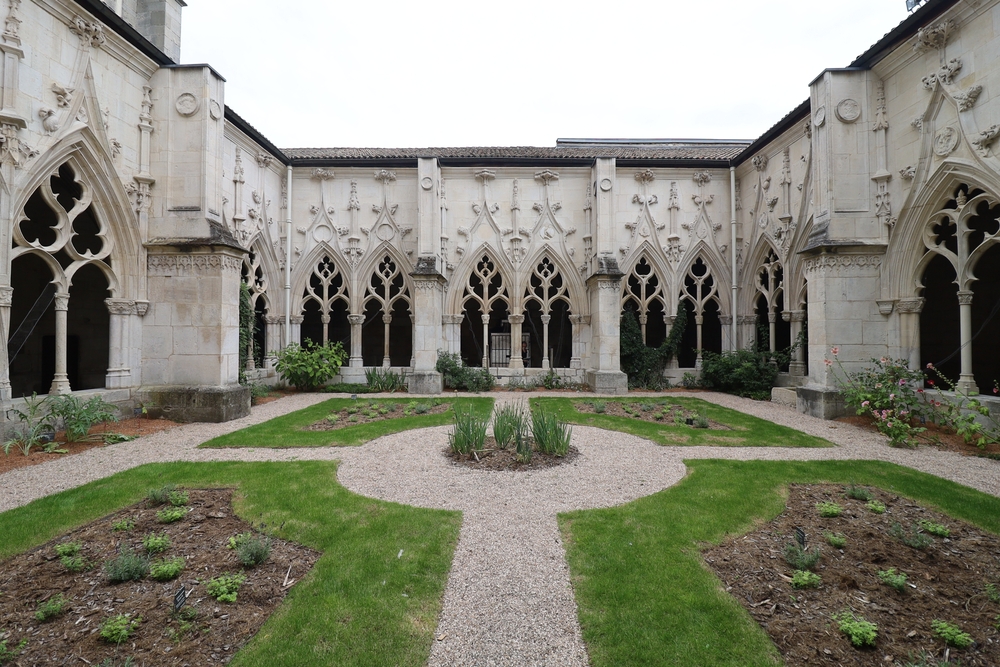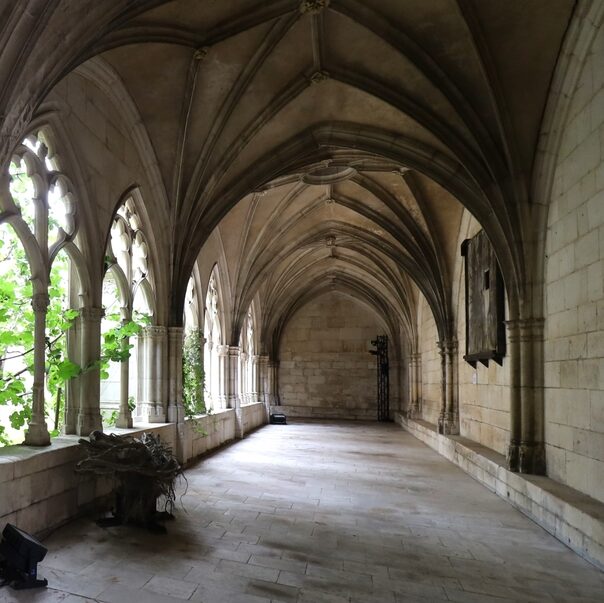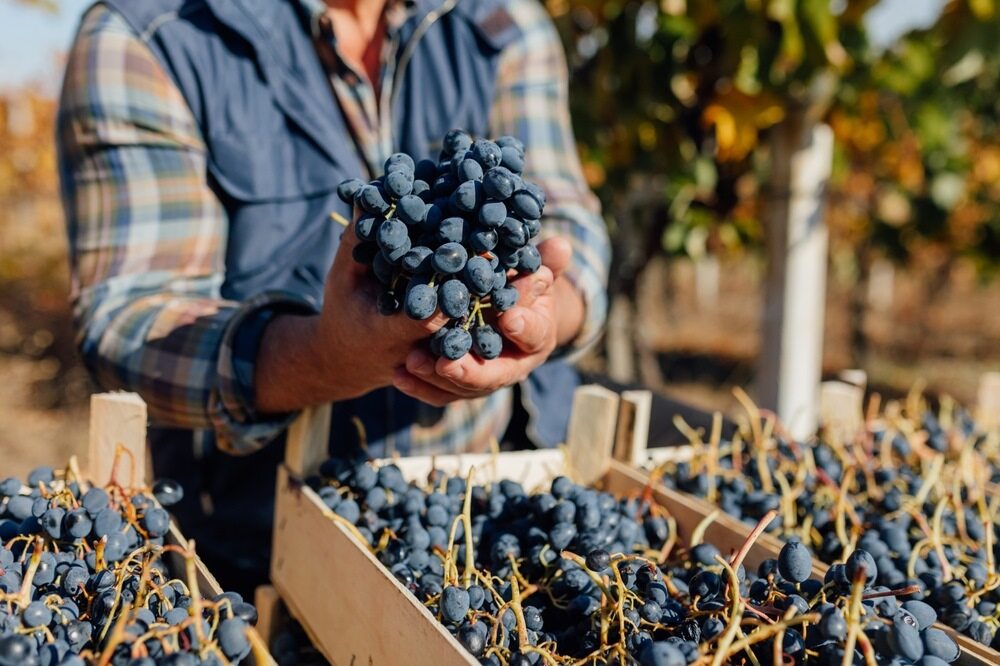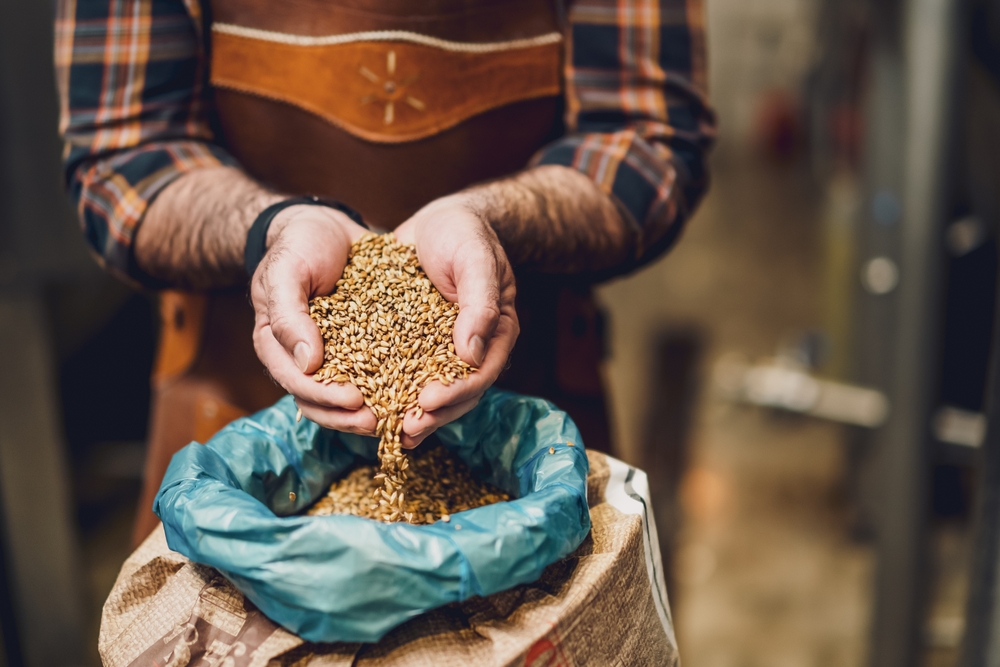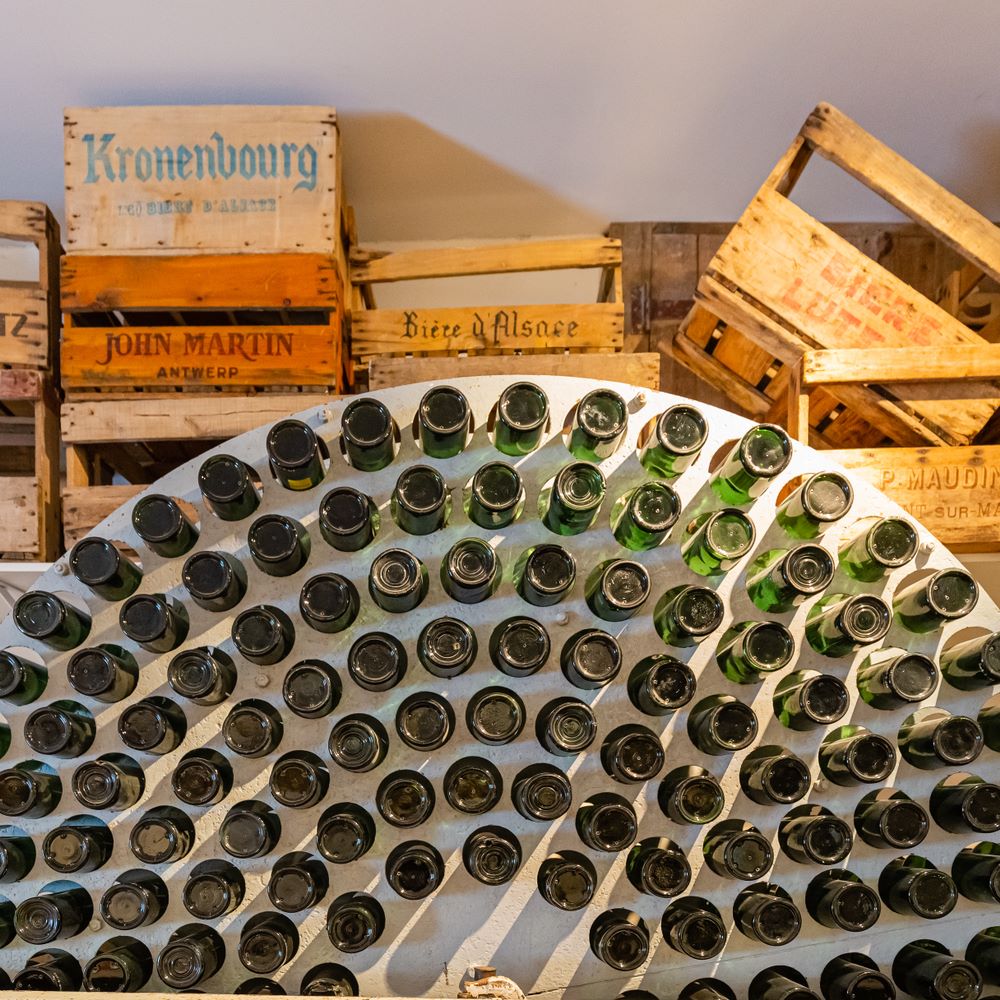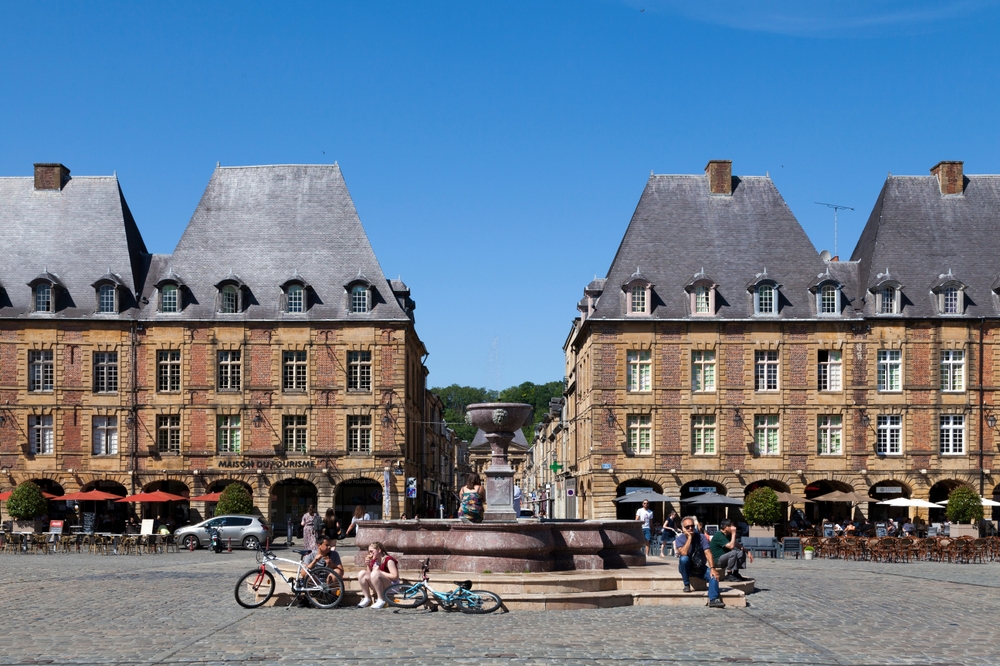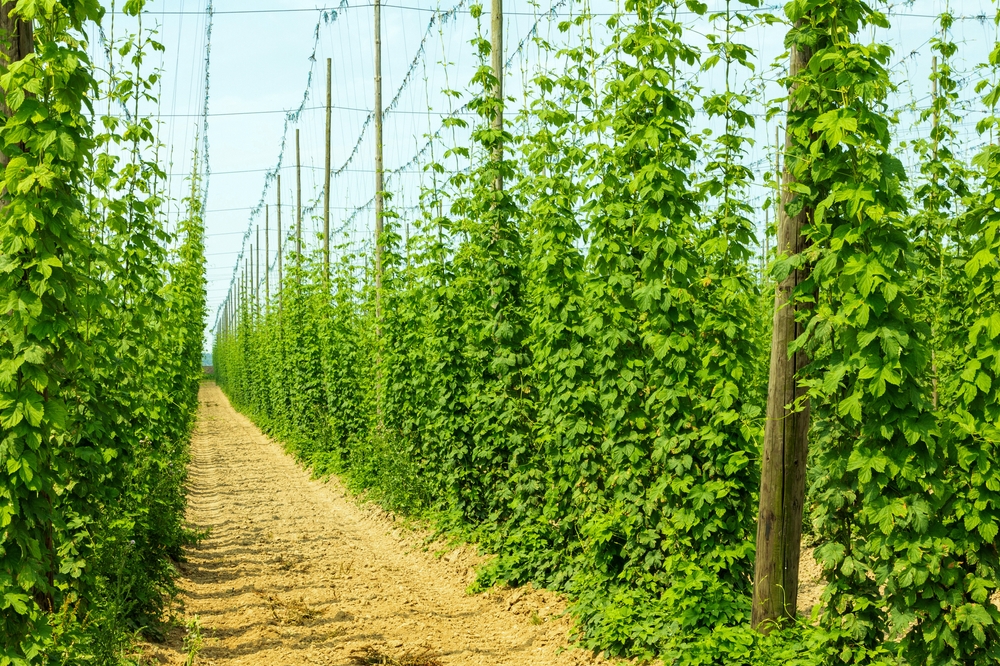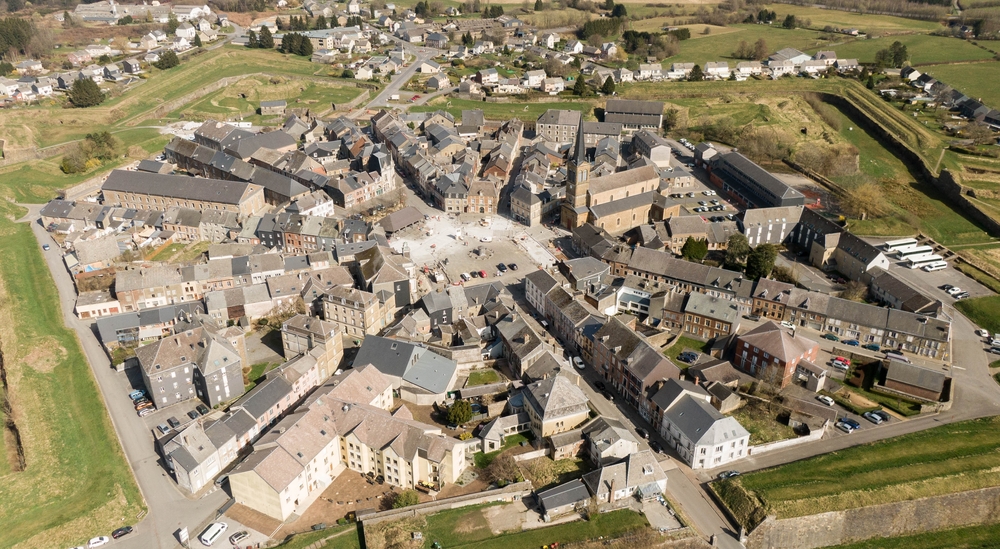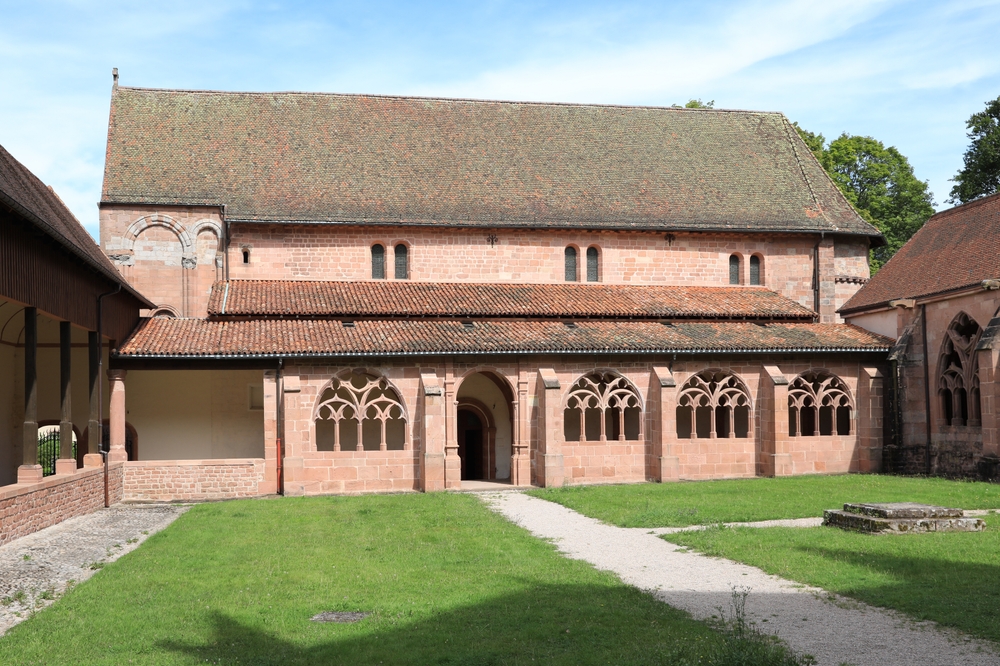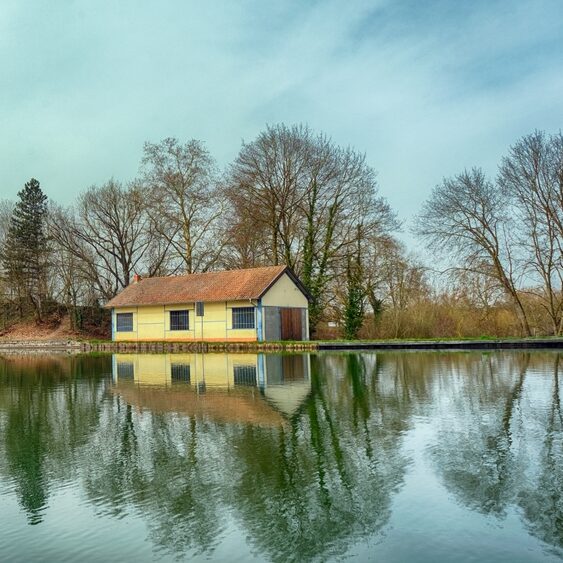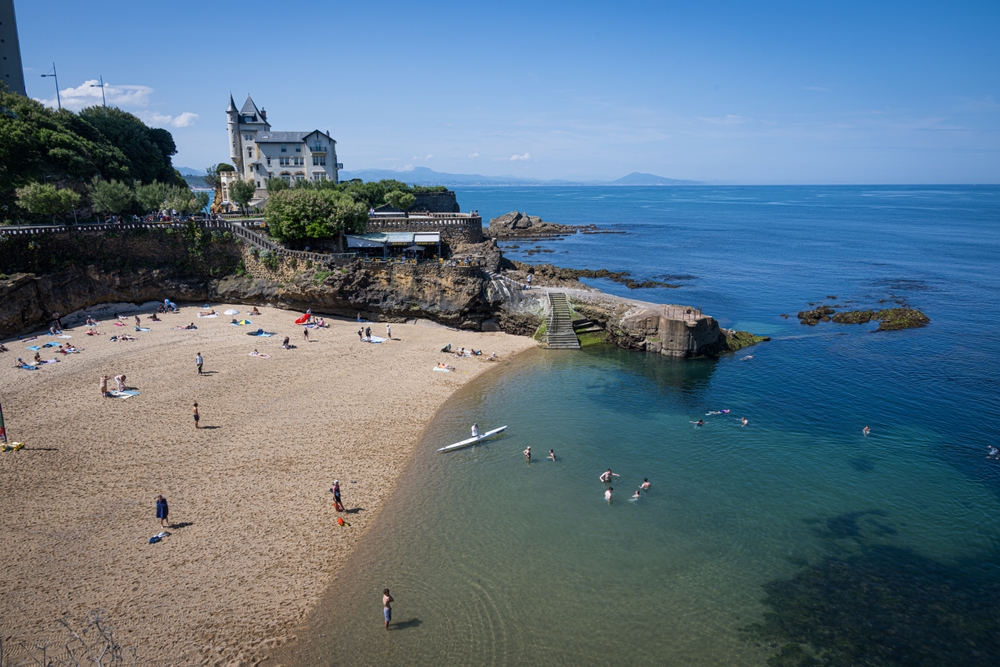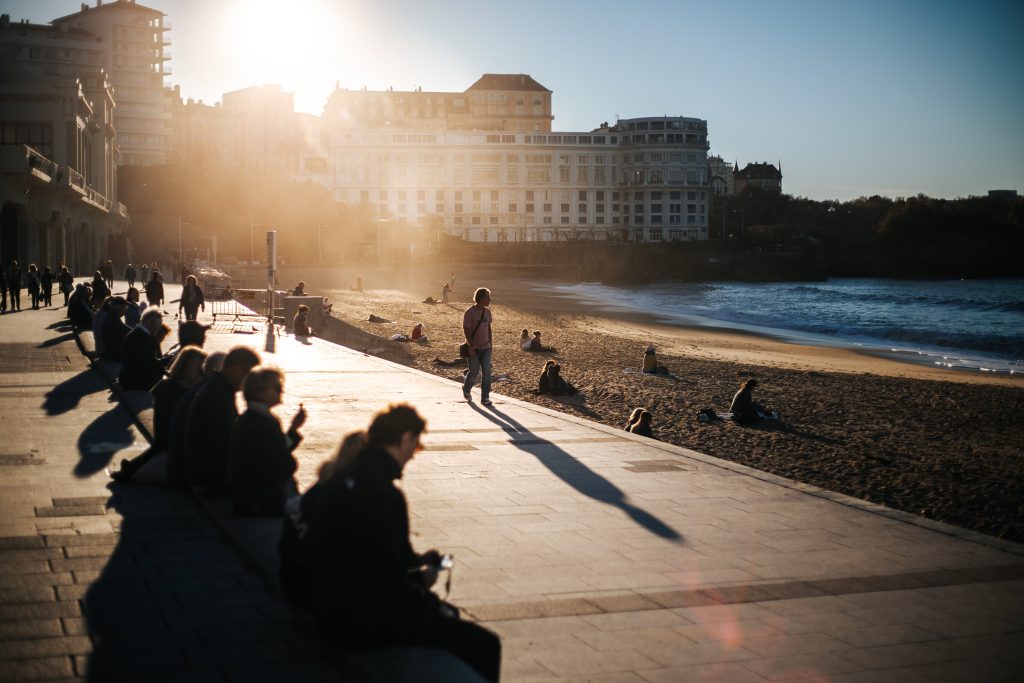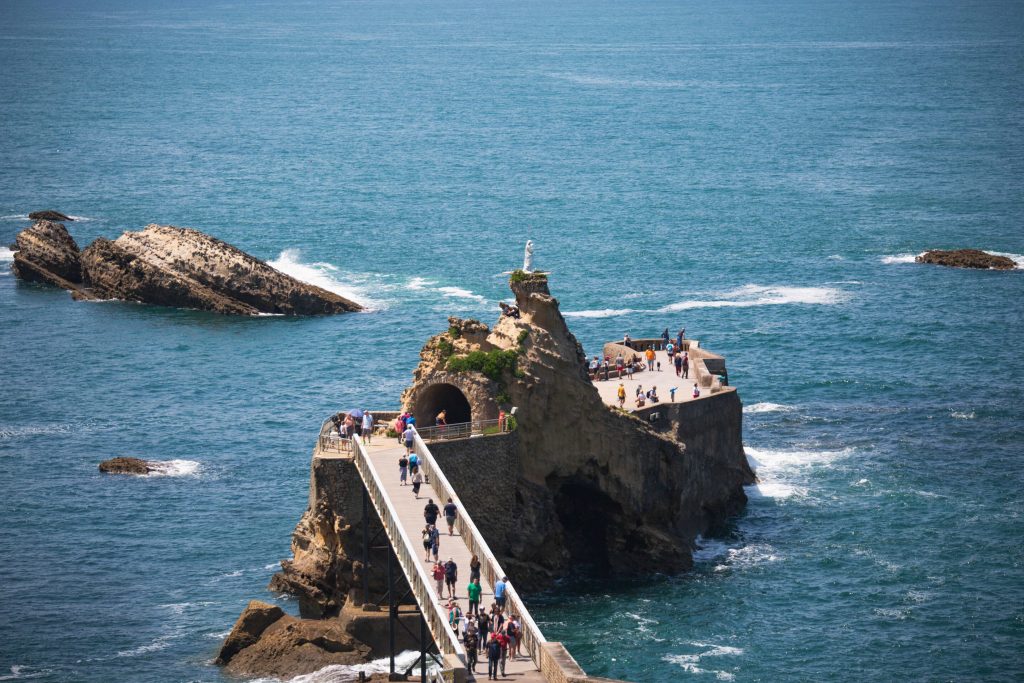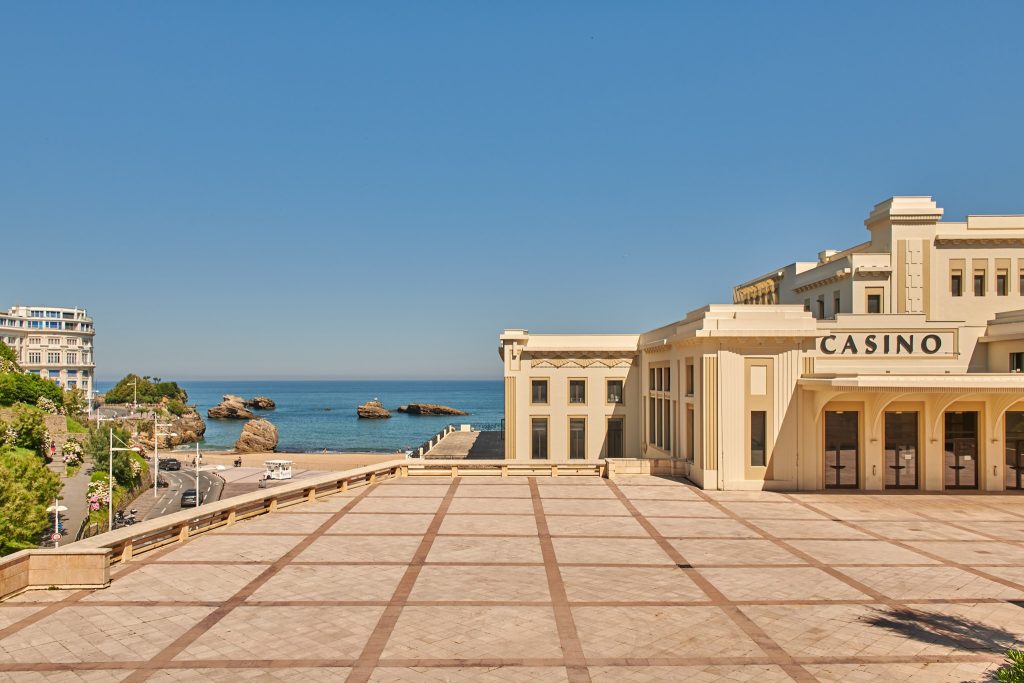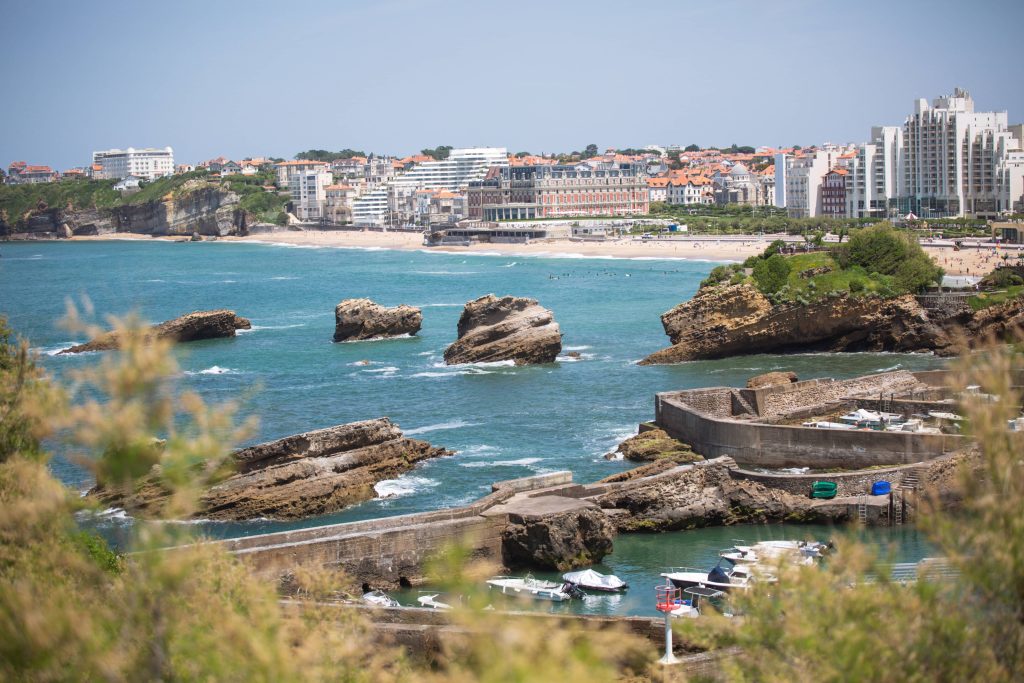Cover photo: Finistère coastline ©Shutterstock / Sebastien Sonnen
With 2,000 km of coastline and 6,000 km of trails, Finistère is the French department with the most hiking routes. From black cliffs battered by the ocean, to lighthouses that have guided sailors for centuries, to green hills scented with sea air, Finistère is an endless source of natural beauty. Teritoria takes you to the westernmost point of France, where land meets ocean and nature meets humanity.
Finistère, or the Beginning of the Land
The word “Finistère” means “end of the earth” in Breton, yet it’s also the gateway to the authentic landscapes of Brittany. Hear the call of the sea with Teritoria…
The unspoilt beauty of Finistère
At the westernmost point of Finistère, the Pointe du Raz invites visitors to take in the breathtaking panoramas at the tip of France: steep cliffs pounded by waves, seabirds soaring overhead, world-renowned maritime vegetation, and ever-changing light over the ocean. Everything here invites you to slow down and admire the raw beauty of nature’s vastness.
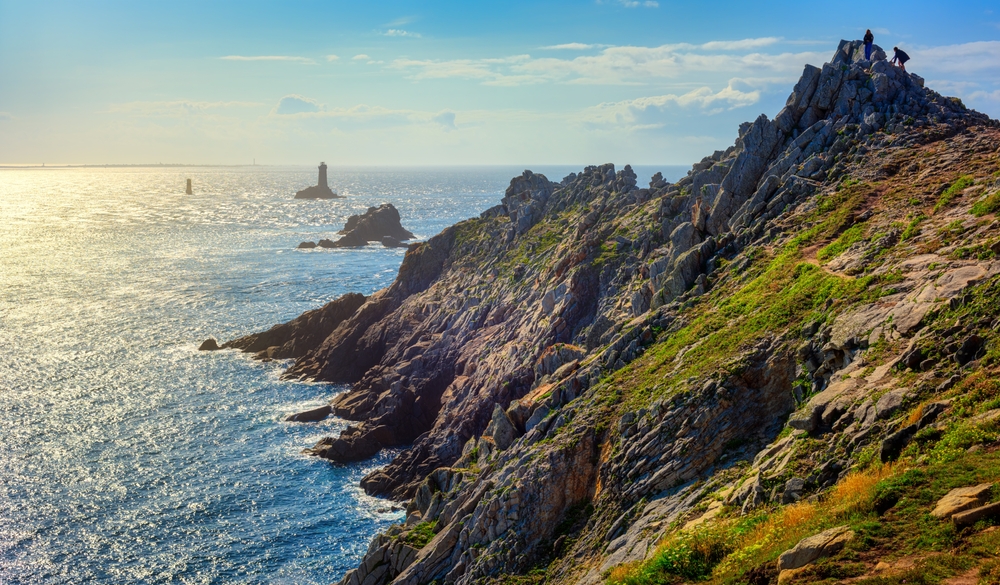
Opposite the city of Brest lies the Crozon Peninsula. Surrounded on three sides by the Brest harbour, the Iroise Sea, and the Bay of Douarnenez, and backed by the dark peaks of the Menez Hom, the peninsula offers a rich blend of natural beauty and cultural heritage. Its rocks are geologically unique, containing rare formations and sea stones hidden in the heart of 400 unpredictable, tide-dependent caves. White quartz, amethysts, and fluorescent minerals: this mineralogical wealth can be explored at the Maison des Minéraux in Saint-Hernot, Crozon.
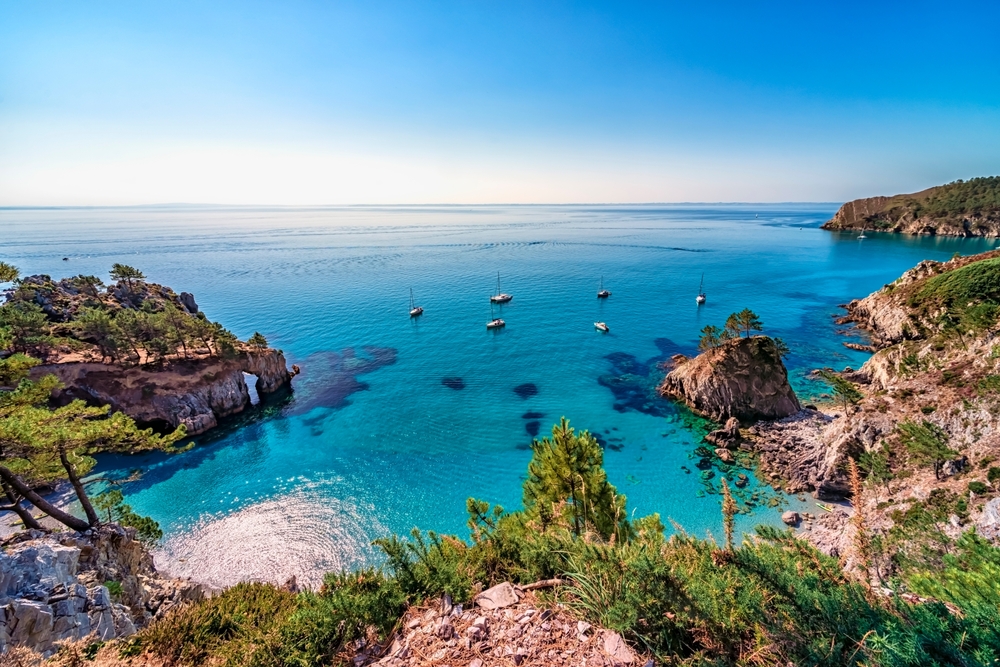
You can reach the peninsula by shuttle bus from Brest, Camaret, or Le Fret (available from April to September), or by taking the D791 road, which connects the peninsula to Le Faou and Brest, ideal for a road trip through Finistère! And don’t forget: the Crozon Peninsula is part of the Armorique Regional Nature Park.
Witnesses of the Past
At the end of the 19th century, the Phare de la Vieille lighthouse was built on the Gorlebella rock, known in Breton as “the most distant rock.” A reassuring and protective light on the western side of the Pointe du Raz, the lighthouse has been listed as a historic monument since 2015. In the past, it was classified as a “hell lighthouse” because of its remote location and the mystical legends surrounding it.
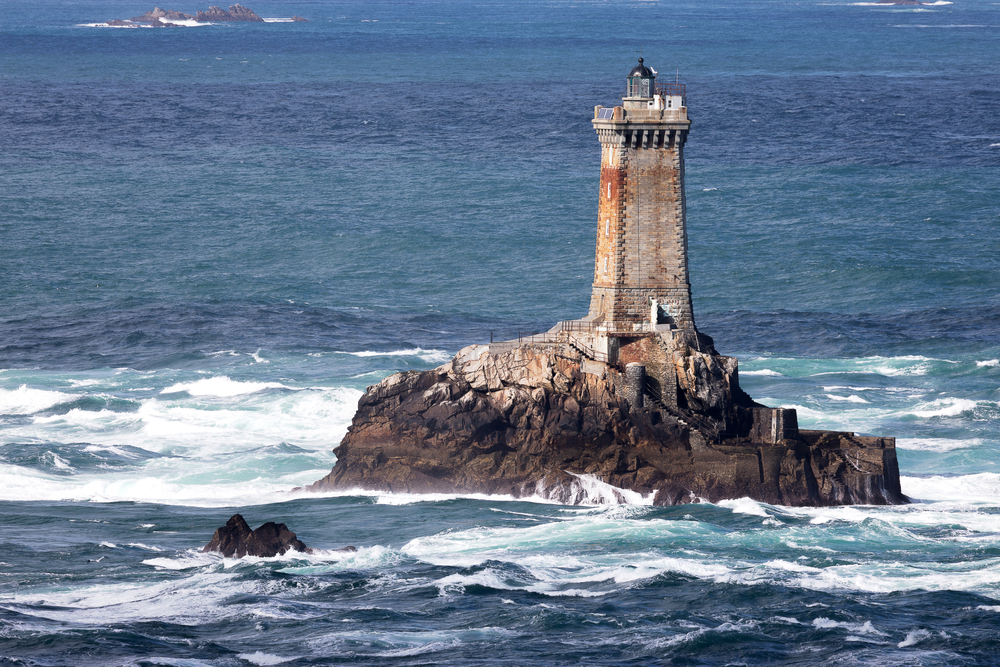
But this is only the first of many lighthouses in Breton waters. Near the Phare de la Vieille stands the Phare de Tévennec, infamous for its curse. Perched on a storm-battered islet at Brittany’s westernmost tip, it is known as “the gates of hell.” From the start of construction, workers claimed to hear the wind whispering kerz kuit (“go away”), and keepers were too afraid to stay there alone. As a result, none lasted long. This fear was immortalised in Anatole Le Braz’s book Le Gardien du feu (The Guardian of the Fire), a tragic love story set in the lighthouse, now nicknamed the “tower of death.” Teritoria invites you to take the time to discover these coastal lighthouses and their haunting histories.
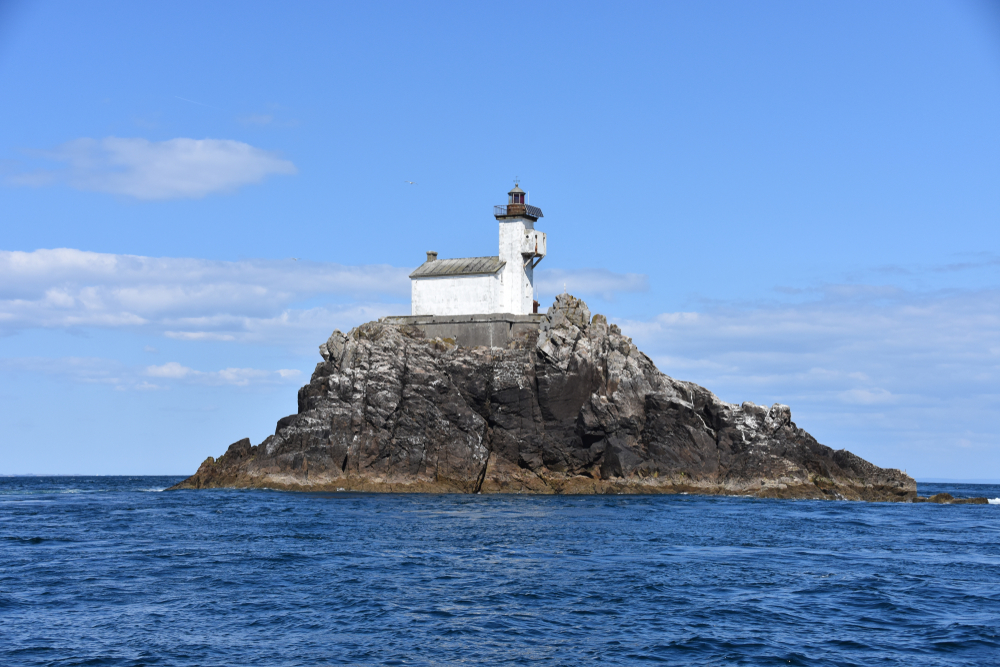
As you admire these guardians and their preserved paths at the tip of France, you can sense the deep history of the lighthouses: solitary yet anchored in the rhythm of the elements. The lives of Breton lighthouses and their keepers were shaped by absolute respect for the sea and unwavering loyalty to their mission, watching over sailors. The sea: their only companion, and at times, their fiercest enemy.
Finistère, unspoilt nature
The GR34 is a haven for nature lovers, winding along the Breton coast and passing through a series of protected nature reserves.
One of them is the Cap Sizun Nature Reserve, established in 1959. This sanctuary is home to a variety of seabirds: European shags, lesser black-backed gulls, herring gulls, great black-backed gulls, common guillemots, and northern fulmars. With a bit of luck, you might even spot their nests tucked among the rocks rising from the ocean.

The ocean, unpredictable and mysterious, plays by its own rules, and nowhere is this more evident than at the Baie des Trépassés, or Bay of the Dead. Its grim name echoes the dangers of the coast, where shipwrecks are revealed after storms. Legend has it the bay once served as a passage for dying druids. Scientists, however, trace the name to a mistranslation of the Breton word avon (river), confused with anaon, meaning “the dead.”
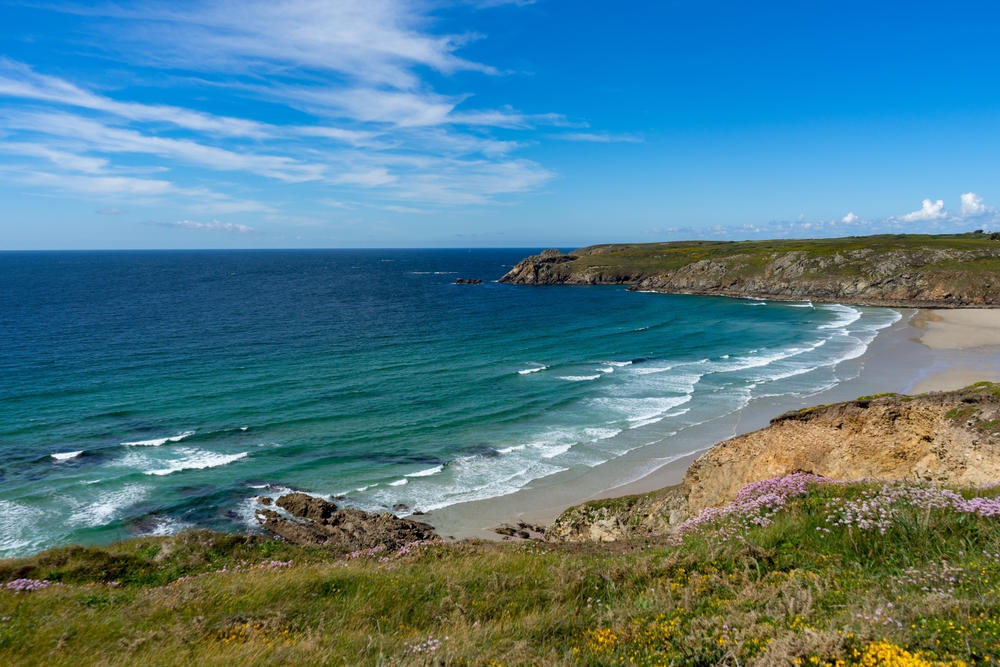
But don’t be misled by the name, the bay is breathtakingly beautiful. With its sweeping views of the Atlantic in shades of blue and green, a hidden beach, and lush cliffs, it’s a paradise for surfers and swimmers alike. Part of the Grand Site de France, the bay is nestled in Finistère, between the Pointe du Raz and the Pointe du Van, in the commune of Plogoff.
The islands: Finistère’s window onto the sea
One of Finistère’s defining features is its openness to the ocean, and the island life it inspires.
The island of Ouessant
Sea-carved cliffs, hidden coves, shifting light, wild coastlines, and some of the best spots to observe migratory birds and native black bees. The island of Ouessant, known as “Ushant” in Breton and often called “the island at the end of the world”, owes its name to its position as the last piece of land before America. Mostly car-free, the island invites visitors to explore at a slower pace, on foot or by bike.
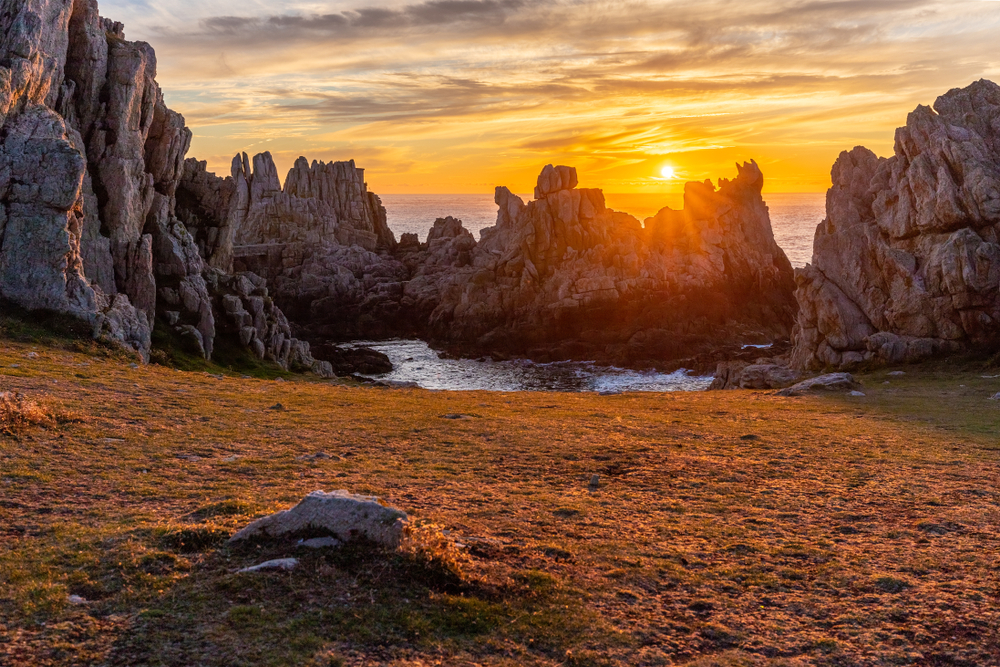
To explore the island’s hidden treasures, the tourist office offers guided walks focused on medicinal and edible plants. A tour of Ouessant reveals plenty to see: the lighthouse, the church and chapel, the mill, a centuries-old megalith, the famous Ouessant sheep, the museum, the fort, and of course, the beach.
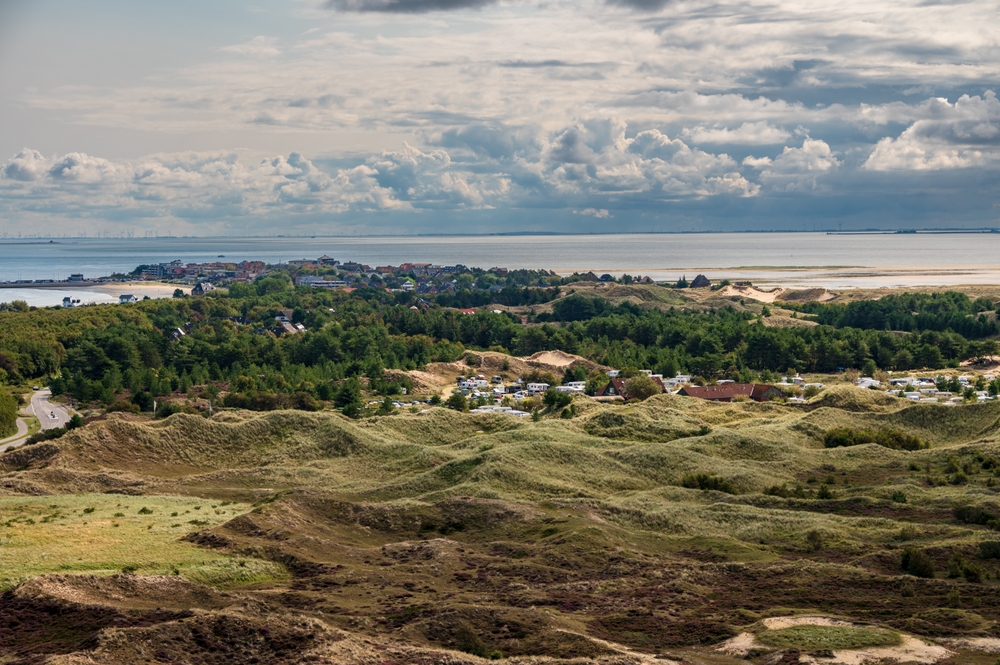
The island takes sustainability seriously and invites visitors to do the same. Bags and gloves are provided to collect animal waste, bottles, cigarette butts, and other debris — so they don’t get mistaken for pebbles on the beach, helping to prevent erosion. Visitors are also encouraged to support small businesses and local artisans, promoting responsible consumption and preserving the island’s resources.
The island of Sein
At the tip of the Pointe du Raz, a car-free town reveals itself, shaped by narrow streets and time. The island of Sein, often called the island of sunshine, is home to two prehistoric standing stones, both listed as historic monuments. With an average elevation of just 1.5 metres, the island has preserved its natural and architectural heritage, from its typical Breton harbour houses to its seascapes, earning it a place among the ‘Most Beautiful Villages of France‘. The lighthouses La Vieille and Ar Men continue to guide ships from France and England. Let them guide you, too.
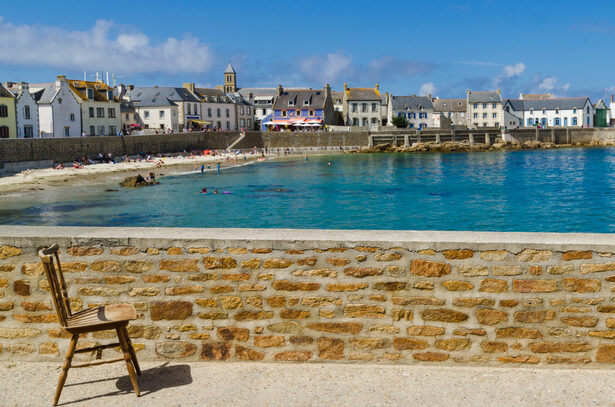
The people of Sein are committed to preserving their island from the noise and rush of the outside world — which is why scooters and bicycles are not allowed. To explore the island, bring good walking shoes. From April to September, phare d’ Ar Men opens its doors to visitors. From the port of Audierne, board the Enez Sun and set off on a cruise to uncover the island’s secrets. With a bit of luck, dolphins may even surface to greet you along the way.
The Island of Glénans
An almost tropical island with pearly white sand and crystal-clear waters, this is the Glénans island. A paradise for Narcisse flowers, wild seals, and water sports enthusiasts. A haven of peace in the heart of the ocean, where white beaches, emerald waters, and seven main islets form a lagoon that can be explored by catamaran, or even from beneath the surface.
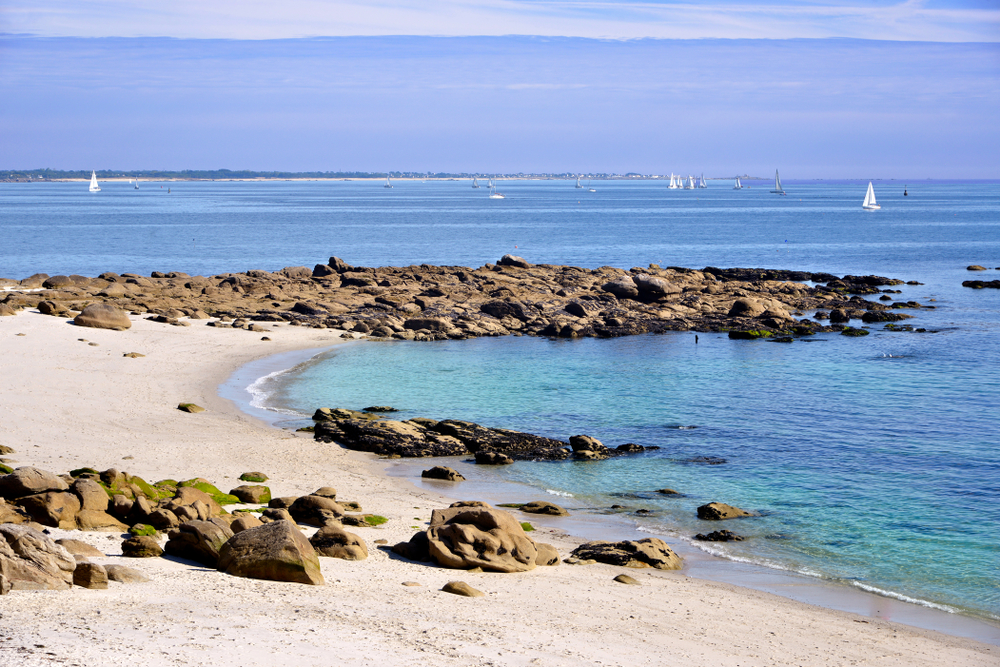
With its colours and landscapes, Finistère has inspired generations of artists. From Mathurin Méheut to Jean Bazaine, Paul Gauguin, Maurice Denis, and Paul Sérusier — each had a unique style, but all shared the same passion: capturing the beauty of Finistère.
Finistère is a place of authentic beauty waiting to be discovered. To find out more about this unspoilt region, check out our newsletter and our offers in the region in our gift shop. If you’ve already fallen for the charms of Brittany, find out how you can be rewarded on your next stay with the Teritoria loyalty programme.
By Émilie FALLOT NGUYEN
